

Planning a Trip to Japan: DOs & DON’Ts (2024)
This page contains affiliate links. Please read our disclosure for more info.
This post is based on an amazing guide our friend Amy Dunn-Cham compiled us full of her Japan tips on how to plan a trip to Japan years ago. We have since visited Japan five times and update this post regularly with what we’ve learnt.
Ah Japan, irasshaimase! Welcome to the land where everything just works. The land of convenience, the land of delicious food, paradox, naked strangers, and where respect permeates through every part of society and culture.
In Japan the food can be described as clean and minimalist, but never simple, which probably sums up Japan as a whole. It’s a place that both lives up to, and out does, any expectation you have upon arrival.
Uh-huh, they have the fastest, sleekest, most efficient trains (ever!), but they still have paper posters pegged up on their Tokyo subway. Yeah, they have amazing futuristic architecture, but they also have countless traditional wooden buildings in amongst it all.
Yes, they have the busiest people crossing in the world (Shibuya), but at no point is it ever chaotic, no need for anyone to bang on a cab screaming, “Hey, I’m walking here!”.
Yes, they have scores of scarily trendy, funkily clad young people who like to cosplay on weekends, but they also have evening family outings to sentos (public bathhouses).
In this Japan travel guide, we’ll help you make sense of it all and share our best tips for planning a trip to Japan.

2024 Update: No Japan Travel Restrictions
When to visit japan, how long to spend in japan, video: best japan destinations, before your japan trip, general dos and don’ts in japan, what to book in advance for a japan trip, top japan destinations, more japan tips.
Japan reopened to independent international tourists on 11 October 2022.
Remaining restrictions were dropped on 29 April 2023, so visitors no longer need to show proof of vaccination or a negative Covid test.
The government also dropped the indoor masking recommendation. Many Japanese people still wear masks (on our late 2023 trip, I’d say about 30-40% of people wore them), but you are unlikely to be required to.
With the yen at the lowest it has been for decades, now is a great time to travel to Japan.
Health care is expensive in Japan, so I highly recommend purchasing travel insurance that covers Covid-19 medical expenses. SafetyWing Insurance is an excellent budget option, especially for travellers on longer trips and families (as children under 10 are free). It’s available worldwide.
If you want a more comprehensive policy with cancellation cover, check out Heymondo travel insurance , which we used on our last Japan trip (it came in handy when Simon broke his foot!). It’s also available worldwide and offers 5% off for our readers.

Back to Contents
We’ve visited Japan in all four seasons and don’t think there’s a bad time to go.
In winter , it’s chilly and gardens are a bit bare, but crowds are lower, you’ll find great deals on accommodation, and you’ll really appreciate those onsens (hot springs). You can also go skiing or snowboarding and have the best chance of seeing snow-capped Mount Fuji.
In summer , it is steaming hot and humid (and June is the rainiest month), but there are fewer foreign tourists around and lots of local festivals to enjoy. It’s also the best time to visit the many beaches and the only time you can climb Mount Fuji.
The most popular and best overall times to visit Japan are spring (March-April) and autumn (October – early December). This is when you can enjoy the gorgeous cherry blossoms (sakura) or autumn leaves (koyo). It’s more crowded and expensive, but the weather can be ideal and it is just stunning.
See our guide to visiting the Kyoto cherry blossoms for more information on the popular sakura season.
On our recent autumn trip, we had warm weather (up to 77ºF/25ºC) with very little rain from October until mid-November, when the temperature in Kyoto suddenly plummeted ahead of the leaves turning colour.

Shoulder seasons May and late-September/early October are also good times to visit with warm weather and lower crowds.
Two times of year I would avoid for a vacation to Japan are:
Golden Week in early May – In 2024, Golden Week is from 27 April – 6 May. This is a series of national holidays so many Japanese travel domestically, trains and hotels book up, and popular spots will be extra crowded.
New Year – Late December to early January. This is also a busy time with local travellers and most businesses close for up to four days.
How long do you need in Japan? As long as possible!
There is so much to see—we have spent months in the country and still have a long bucket list.
For first time visitors, I recommend visiting Japan for two weeks. This is enough time to see some highlights—Tokyo, Kyoto, and one or two smaller destinations. See our Japan two week itinerary for suggestions.
A week is the minimum time I recommend for a Japan trip. For a more relaxed Japan vacation, spend the whole week in Tokyo or Kyoto and take day trips. Or if you don’t mind rushing about, visit both major cities with an overnight stop on the way (such as Hakone).
Read our guide on the best places to visit in Japan to decide where interests you most and come up with an itinerary. You’ll find some suggestions at the end of this guide.
Watch this video for Japan trip ideas.
- Check if you need a visa . Visa-free travel is possible for citizens of 68 countries for stays of up to 90 days (including US, UK, Canada, Australia and the EU). Do have a return or onward flight out of the country as they may grill you upon arrival. It was the nicest immigration interrogation we’ve ever had, though.
- Purchase your Japanese Rail Pass exchange order before you travel to Japan (if needed, more on that later).
- Learn some Japanese —numbers are especially useful! While you can get by with Google Translate, it’s much more fun to learn some Japanese (which isn’t as hard as you might think) and locals really appreciate it. We are currently learning with the comprehensive Rocket Japanese online course , which includes audio lessons with natural dialogue, grammar and culture tips, and voice recognition to test your pronunciation. It’s a little pricey but unlike most subscription-based courses, you get lifetime access and discounts are often available.
- Get an International Driving Permit . You’ll need this for go-karting on the real Tokyo roads dressed as your favourite character. Insanity but one of the most fun things we’ve done in Japan.
- Arrange travel insurance. Healthcare is expensive in Japan, so make sure you are covered in case the worst happens. We’ve used and recommend Heymondo and SafetyWing (both available worldwide).

- Apply for a Mastercard credit or debit card – If you don’t already have one. Some Japanese websites don’t work with Visa so it’s good to have a backup. We used a Starling Bank debit card (UK only), which has free international transactions and cash withdrawals.
- Walk as much as possible – You will walk a lot in Japan cities so it helps to get some training in beforehand (and wear in some comfy shoes).
- Practice using chopsticks – You’ll need them to eat in almost every restaurant (curry is the exception as it’s eaten with a spoon). Getting used to sitting on the floor is a good idea for some restaurants and experiences too.

- Buy a pre-paid transport IC card for local trains, metro and buses. You just tap on and off and don’t have to worry about buying a ticket. In Kyoto and Osaka, it’ll be an ICOCA card, and in Tokyo, it’s a Suica or Pasmo, but you can use any of the cards all over the country. Physical cards are currently in short supply (due to a chip shortage), so I recommend adding Suica to Apple Wallet on your phone or watch. Visa doesn’t work as a payment method so use Apple Pay, Mastercard, or American Express to top up. We just tapped on transport with our Apple watch and didn’t even need to open the app. Unfortunately, this doesn’t work for Android phones bought outside Japan.
- Set up an Airalo eSIM – You’ll want affordable data on your phone as having access to maps and Google Translate makes life so much easier. A digital eSIM is simple to set up before you arrive and prices at Airalo start at just US$4.50. We used it on our last Japan trip and it worked great. If your phone doesn’t support eSIMs, you can buy a physical Umobile SIM from a vending machine at Tokyo Narita Airport (make sure your phone is unlocked).
- Sign up to the Timeout Tokyo newsletter – To learn about special events during your stay.

- Buy tickets for Ghibli Museum and Ghibli Park – If you are a Studio Ghibli fan, you might want to visit the museum in Tokyo or new park in Nagoya. It’s essential to book ahead. See below for details.
- Research what else to book in advance – Many attractions and restaurants in Japan require advance booking so decide what’s important to you (ideally at least three months ahead) and set reminders for when bookings are available. At the end of this post you can see the timescale for what we booked for our latest trip.

- Consider a Japan Rail Pass . The luxury of shinkansen (bullet train) hopping is exhilarating. No need to book seats in advance, just choose a train, wave your pass and hop on. These passes are only available to foreigners and you can order online from JRailPass.com . Read our guide to whether a Japan Rail Pass is worth it for everything you need to know after the price increase in October 2023 (it’s still worth it for some trips if you are travelling a lot).

- Bow if you are being bowed to . If you can manage it too, don’t turn your back upon exit. Don’t overdo it though or you’ll be a total gaijin , no need to bow to the supermarket checkout person!
- Pre-book accommodation. Wise anyway as the more affordable accommodation fills up fast, but also in line with the whole respect thing, Japanese people like to be prepared for your arrival. So don’t just randomly rock up at a ryokan for the night! Booking.com is our favourite site for finding hotels and guesthouses, and we also use AirBnb and Vrbo to find apartments in the big cities (which are often cheaper than hotels). See our Japan accommodation guide for recommendations.

- Go onsening! You might want to skip this in summer as hot doesn’t even come close to describing the water temperatures! But soaking in a hot spring is one of the most typical things to do in Japan and is ultra relaxing once you get over your fears of public nudity (yep, no clothes allowed!). Best of all, visit an onsen town where you can onsen-hop dressed in a kimono. See our Kinosaki Onsen travel guide for details on this lovely onsen town as well as hot spring etiquette.

- Stay in a ryokan (traditional inn). Pricey but worth it for at least a night or two for the unique experience and the amazing meals that are often included in the room rates (and many can cater for vegetarians/vegans). Our favourite ryokan is Tsukihitei in Nara, so traditional and with a magical forest setting. We also loved our private bath overlooking the scarlet maple trees at Nanzenji Ryokan Yachiyo in Kyoto (book a suite not a standard room). More budget-friendly options are Hotel Musashiya in Hakone, where our room and onsen had a view of Lake Ashi, and Morizuya Ryokan in Kinosaki Onsen, which is perfect for onsen-hopping.
- Stay in a traditional tatami mat room. If you can’t stay in a ryokan, a much cheaper way to stay in one is a traditional room in K’s House hostels—they have branches in Hakone (with onsen), Kyoto , Izu Peninsula (in a 100-year-old building with onsen), and all over the country. We never had a bad experience with this hostel chain in our budget travel days.

- Appreciate the zen-like calm on all modes of transport – no need for quiet only carriages here! Just remember that it’s rude to speak on your phone on trains in Japan.
- Use Google Translate . Many people don’t speak English, so the Google Translate app is helpful for communicating. Write what you want to say in English then show the Japanese translation to the person. Even more impressive is the feature to translate images—point your camera at a sign, menu, or food label and it translates the text instantly. It’s not perfect but when it works, it’s brilliant.
- Translate websites too – Many Japanese websites (especially restaurants) are only in Japanese so using Chrome or Safari, refresh the page and select the English option at the top. On Safari on my iPhone, I tend to select a block of text and tap translate from the popup.
- See some sumo . If you’re lucky enough to be in the country when one of the sumo tournaments is on, go! The pre/ post game rituals are fascinating to watch. If you aren’t there during a tournament, you can see a practice session at a sumo stable in Tokyo . It was one of our favourite experiences in Japan—it felt like such an honour to see these huge, impressive sumotori training so close.
- Expect bursts of freakery!

- Get your paper fortune at a Japanese Buddhist temple. Okay, we cheated and got an English one at the Golden Pavilion (see our guide on the best things do to in Kyoto ), but what the hell! You can also get one at the gorgeous Sensoji Temple in Tokyo .
- Love the Japanese for their never-ending capacity to help you out , and they won’t stop until they do!
- Read these Japan books before you visit for a greater understanding of this weird and wonderful culture.
- Have some sushi – Sushi is the essence of Japan, plus sushi-train/ sushi stand up bars are so much fun watching the chefs take your order, and all shout in unison, “samon!” or “tamago!” etc. Vegetarian sushi isn’t very common, but we did find some—see our vegetarian Japanese food guide .

- Appreciate the plastic food models as works of art!
- Pack slip-on shoes. You’ll be taking your shoes on and off a lot in temples and restaurants. I wear the comfy ballet flats Allbirds Tree Breezers in warmer weather and Allbirds Wool Runner sneakers (for men and women) in cooler weather—they keep your feet cosy but can be worn without socks and easily slipped off without untying the laces. See my detailed Allbirds review .
- Shop at the 100 Yen shops. Like pound shops BUT BETTER! Daiso is a great one.
- Play in the arcades dotted around cities, the taiko drum game rocks!
- Make use of the many vending machines EVERYWHERE . You will never go thirsty in Japan that’s for sure. You can even get hot coffee…in a can! (Simon’s saviour when we had early morning trains to catch.) In fact, you can get friggin’ anything from vending machines from cheap 100 yen sake (yuk!) to hot chips (not surprisingly we did not try!) and SIM cards. In Tokyo you can use your Suica transport card to pay.
- Press random buttons on the panel next to you on the loo . It will make you giggle ;o)! Also, if it’s cold then appreciate the absolute miracle of heated toilet seats.
- Fall in love with seeing toriis (shrine gates) everywhere , especially small red ones in rows behind each other. Fushimi Inari Shrine in Kyoto is our favourite (but go early as it’s popular).
- Love and appreciate the beautiful presentation of absolutely everything from the amazing architecture to the way bento boxes are wrapped in a napkin tied in a knot just so, to amazing manhole covers!
- Pack light. It will be much easier to hop on and off trains while travelling around Japan if you pack light, and hotels have limited storage space for luggage. Best of all, travel with just carry-on luggage . The Away Bigger Carry-On was perfect for our trip and fit overhead in trains.

- Consider luggage shipping – We haven’t used this yet, but if you have large luggage, it’s common to send it between hotels (it takes a day, so pack essentials in an overnight bag).
- Withdraw cash from 7-11 ATMs. They are the most reliable no-fee option for international cards and can be found everywhere. Make sure you always have cash on hand as many places don’t accept credit cards (although this is improving). Note that some 7-11 ATMs in popular spots (the airport, Gion), do now charge, so try to withdraw in less touristy areas.
- Use Navitime to check train times and prices (and to work out if a Japan Rail Pass is worth it for your itinerary ).
- Visit BIC Camera if you need any kind of electronics. These massive stores have everything you could imagine. Take your passport if you are making a large purchase (over 5000 yen) and get it tax free. I bought a camera here and ended up getting lots of extra discounts and free accessories. It’s also a good place to buy a SIM card if you didn’t pick one up at the airport.
DON’T:
- Rent a car – For most visitors the best way to travel Japan is by train. Elsewhere we love road trips, but renting a car in Japan is just not worth the hassle unless you are travelling far off the beaten track.
- Open the door if taking a taxi. They are either automated or the driver will open it for you. It’s also a good idea to have your destination’s address written down in Japanese to show the driver as most don’t speak English.
- Feel bad if you need to take a break from Japanese food – Japan isn’t always an easy destination and indulging in a comfort meal can be restorative (we’ve had some excellent pizza in Japan).

- Forget to check opening hours – Japanese restaurants aren’t usually open all day and both restaurants and attractions usually have a last order/entry 30 to 60 minutes before closing.
- Go whizzing around the country too much. It can save energy to base yourself in one place and take day trips as we did in Kyoto and Okayama .
- Wear holey socks. You’ll only be embarrassing yourself when you take your shoes on/ off constantly!
- Go into an onsen without washing first , that’s just dirty dude! Also, don’t go into the bathing area with a towel wrapped around you, you’ll just look stupid. Embrace the nudity! Everyone’s naked so no-one cares. My Kinosaki Onsen guide has more etiquette tips for newbies.

Japan is a popular destination and many hotels, restaurants, and attractions book up in advance. While you can still have a wonderful last-minute trip, it’s worth researching what you’d like to do months in advance to see what needs reservations.
On our most recent trip to Japan (in the busy autumn October/November season), this is what we booked ahead:
5 Months Before
- Flights – This is personal preference and earlier or later could also work. Tokyo Narita (NRT), Tokyo Haneda (HND), or Kansai International Airport in Osaka (KIX) are all good options to fly in to.
- Accommodation – Ryokans and hotels in smaller towns are most important to book ahead. Some hotels don’t take bookings more than 3 or 6 months in advance, though. We used Booking.com and almost all had free cancellation.
4 Months Before
- Tokyo DisneySea Hotel MiraCosta – Our favourite place to stay in Japan is right inside the best Disney park in the world. Rooms go on sale 4 months in advance at 11am JST and sell out in minutes, so it’s essential to do some practice runs.
3 Months Before
- Harry Potter Studio Tour, Tokyo – We booked 7 weeks in advance and only got an afternoon slot, so earlier is a good idea. Check Klook and the Warner Bros Studio Tour website as they have different availability.
2 Months Before
- Ghibli Park , Nagoya – Tickets go on sale on the 10th of the month at 2pm JST for 2 months later (it changed recently from 3 months). So May tickets will be on sale on 10 March. These sell out quickly, so be prepared.
- Teamlab Planets , Tokyo – Book early if you want a specific time for this interactive digital art exhibition (we wanted the first slot). We booked on Get Your Guide . The new TeamLab Borderless is also selling out fast (tickets available on Klook or direct ).
- Some Restaurants – We booked Monk in Kyoto exactly 2 months in advance at 12pm JST (after five attempts) and Shigetsu in Kyoto (as we were visiting during peak autumn colour). Creating a Tablecheck account is a good idea as quite a few restaurants use it for bookings.
- Saihoji (Moss Temple) , Kyoto – It’s expensive and might not be a priority with limited time in Kyoto, but it’s our favourite temple. Reservations open 2 months in advance.
- Universal Studios Japan Express Passes – These are essential to skip the lines at this very busy park in Osaka, and they do sell out. We bought the Express Pass 7 – Backdrop and Spiderman on Klook (much easier than the official site which is in Japanese only). We bought our USJ entrance tickets on Klook at the same time. See our Universal Studios Japan guide for more tips.

1 Month Before
- Ghibli Museum , Tokyo – Available at 10am JST on the 10th of each month for the following month.
- Shibuya Sky , Tokyo – Bookings open 4 weeks in advance at midnight Japan time. Book fairly soon after that to get the peak slot (one hour before sunset).
- Tours – I booked a sumo stable visit (highly recommended) and Shinjuku bar hopping tour in Tokyo. Go-karting is another fun option we’ve done before. I used Get Your Guide for most tours. Klook is a good option for tickets and attractions too.
- Tea Ceremony Ju-an , Kyoto – Learn the traditions of tea in a temple. One of the highlights of our trip.
- Sakurai Tea Experience , Tokyo – If you love green tea, don’t miss the tea tasting at this modern tea room.
- More Restaurants – I booked Saido in Tokyo, Uzu Vegan Ramen in Kyoto (reservations essential), and Ristorante di Canaletto at DisneySea (one month in advance at 10am JST exactly).
- Tokyo DisneySea and Disneyland tickets – I booked on Klook. The parks probably won’t sell out, but we didn’t want to take the chance.
- Japan Rail Pass – If you decide to get one, allow plenty of time for your exchange order to arrive by post, just in case (you activate it on arrival).
2 Weeks Before
- Shinkansen Train Seat Reservations – We used the SmartEx website , which can be difficult to set up (use a Mastercard and keep trying to authenticate the payment method) but very handy. When booking a train from Tokyo to Kyoto, choose a seat on the right side of the train for Mt Fuji views (if clear). If you have large suitcases, you’ll also need to make an oversized baggage reservation .
- Airport Taxi Pickup – From Narita Airport we get the Narita Express train, but from Haneda Airport (which is closer to central Tokyo), we prefer a taxi for ease. We booked this Haneda airport pickup on Klook .
- More Tours and Restaurants – Book any more priorities as you finalise your itinerary.

Japan has so much to offer but here are a few places to get you started.
- Tokyo – The best of modern Japan. This huge city has incredible food, diverse neighbourhoods, and some unique experiences. Try these cool things to do in Tokyo and enjoy the best vegetarian restaurants in Tokyo .
- Kyoto – The best of traditional Japan with many stunning temples to explore . Read the best things to do in Kyoto .
- Takayama – A smaller, quieter alternative for traditional Japan with a beautiful historic centre of preserved wooden houses.
- Hakone – For the chance to see Mount Fuji, mountain scenery, lakes, onsens, and fun transport options (cable cars and pirate ships!).
- Kawaguchiko – Even better views of Mount Fuji at Lake Kawaguchiko .
- Nikko – Stunning temples in the forest. Could be visited as a day trip from Tokyo.
- Hiroshima – Visit the moving peace memorial that commemorates the atomic bombing and don’t miss nearby Miyajima Island.
See our Japan 2 Week Itinerary for a detailed guide to visiting many of these places including things to do, transport, and where to stay and eat.
Or our guide to the best places to go in Japan has more ideas.
Japan Tips, Direct to your Inbox!
Thank you for subscribing! You should receive an email from us very soon. Click on the link in the email to confirm your subscription.
- Is a Japan Rail Pass Worth It?
- 54 Best Things to Do in Japan for an Unforgettable Trip
- Where to Stay in Japan: A Guide to Accommodation Options
- 20 Fascinating Books to Read Before Visiting Japan
- 16 Unmissable Places to Visit in Japan
- Vegetarian Survival Guide to Japan
If you enjoyed this post, pin it!

166 Comments
Thank you for the lovely Japan Blogs – it is making our travel planning fun! It would be really helpful to understand the areas to stay in within the cities, especially first time travelers to Japan.
Reply ↓
Thanks JK! Our Kyoto guide has tips on the best area to stay (Gion or downtown) and in Tokyo, we recommend Shinjuku for first time visitors. Enjoy Japan!
Wow, an amazing blog, Erin. This is helping us so much plan our trip. It is great to see you updating it regularly too. It’s becoming a daily read.
Kind regards,
Thanks so much for this post! As is often the case I am following you around the world and now I’m going to Japan. Look forward to reading everything you’ve written on it!
Good to hear you are going to Japan, Ruth! I hope you enjoy it as much as we always do!
We are a very active retired couple and love exploring different cultures, sights, and exploring nature. We are planning on going to Japan for the first time for 3 -4 weeks, around the third week or so in Sept to mid October or later. We will travel with just carry on luggage and backpacks. We love touring on our own, or booking individual tours at the different places. We are open to basing in Tokyo, Kyoto, Hiroshima(?) plus other places and doing day trips from these places. What would be a good itinerary for our 21+ day trip? Thanks so much! We love your website! Bunny
Hi, I lost my comment somewhere on your blog 😅 So, me and my partner are going to Japan for 4-6 weeks in sept/october. We want to travel in a slow pace and want to visit Tokyo, Kyoto, hiking around Kiso Valley (and Kumano Kodo?), Nagano, Kanazawa? We also want to explore some nice nature, visit onsen, sleep at a roykan etc. Hokkaido would be cool but i don’t know if we will have time with that. Do you have any tips where we must go? I think our plan is to be at least 7 days each in Kyoto and Tokyo, we want to stay for minimum 2 nights at each place. Would you recommend to start in Tokyo? Is it worth to start a week in a busy town with jetlag? Should we go somewhere else (where?) for a nice start on the vacation?
Thank you! /Johanna
Hi Johanna!
I’m planning a solo trip from ~May 21-June 21, but i’m worried i’ll hit the rainy season and humidity. What to you advise? I’m limited to May 21st as my earliest trip start date due to school!
I think it makes sense to start with Tokyo if that’s where you are flying in to. That way you don’t have to worry about travelling elsewhere and you have enough time there that you can plan for the first few days to be pretty relaxed – wander some neighbourhoods, eat etc.
Sounds like you have plenty of time to do everything you want. You could easily use that time in central Japan, but you could add in Hokkaido if you really wanted (we still haven’t made it there). Enjoy!
Hi Erin, is it advisable to visit Lake Kawaguchiko in November? And, do you think it is possible to do a day trip to Lake Kawaguchiko having Tokyo as the base?
We haven’t been in November but we definitely would. You will likely see the autumn colours too (generally peak around mid-Nov), which would be beautiful.
It will likely be colder than Tokyo, but as long as you are prepared with warm clothes it should be enjoyable.
And yes, it is possible as a day trip from Tokyo – many people go by train or on bus tours. Just be aware that Mt Fuji is often hidden in cloud, so if you stay overnight you increase your chances to see it. But you could also try to choose a clear day for your day trip. Enjoy!
Our Lake Kawaguchiko travel guide has more details.
Thank you for creating this! I’m making my way through reading all of your posts. I will be visiting Japan for 14 days for the first weeks in April with my husband, a 7 year old, 10 year old and my two of my adult siblings. We’ll be a big group but I’m very excited as this is my first time and have always dreamed of going. Wondering if you have any advice for the younger kids or any kid entertainment? Thanks again!
Travelling with kids isn’t our area of expertise so I don’t have any specific recommendations except for Tokyo Disney, which we love. Tokyo DisneySea is our favourite park—it’s the only one in the world and has plenty to offer for kids and adults. Enjoy!
Absolutely love this perspective on travel! It beautifully captures the essence of what it means to explore the world. Travel isn’t just about ticking off destinations; it’s about slowing down, immersing yourself in new cultures, savoring moments, and absorbing the rich tapestry of life that the world has to offer. 🌍✈️🌏
Thank you so much for this! I have started notes and saved the page so that I can come back and check out all the links. :) I am wanting to take my 14 (would be 15 then) daughter alone (we do girl’s trips every year without dad) to Japan. She loves all things Cherry Blossoms! We try and do her spring break time (next year will be the first week of April), but I am concerned about that being too short of time period. Could we do it? If that is all the time you had, would you have a ‘base in Tokyo and then do some excursions from there (which is how we like to travel)? I am also worried about the language barrier and us being able to navigate since sometimes Google translate will not work. Thanks again!
Hi Jennifer, With one week I would focus on Kyoto, which is a better location for cherry blossoms and also has so many beautiful temples and gardens. It’s more traditional Japan (although there is a modern part too). Ideally, you’d fly into Kansai Airport which is closest.
If you have to fly into Tokyo, you could spend a few nights there before taking the shinkansen train to Kyoto (the quickest one is just over 2 hours).
If you really want to see the more modern side of Japan or don’t want to take the train, then Tokyo would be a great base. You can still see plenty of cherry blossoms there.
We don’t speak Japanese (although we are trying to learn this year) and have always managed. The Japanese are very helpful and will always try to help you out, even with a language barrier. And there are an increasing number of signs in English. Just make sure you have data on your phone as Google Translate and Maps are super helpful (you can download Japanese offline in Translate too).
Be sure to book accommodation far in advance for the cherry blossom season (ideally 6 months+).
Enjoy Japan! Erin
Hi Erin, My husband & I are travelling to Japan in August as he is competing in the world masters swimming competition. We have to be in Fukuoka for the competition and then he have 9 days to explore the country ending up in Tokyo for our flight home. Could you advise what we should do at this time of year. Do you think it is sensible to base ourselves in Kyoto and then take daily trips from there using the JR Pass, (do you recommend we get the Green pass). Your advise would be greatly appreciated. Thanking you in advance.Pia
Hi Pia, that’s exciting!
If you don’t want to move around too much then I do think Kyoto is a great base. There’s so much to do (including festivals in August) and lots of possible day trips. You could finish up with a couple of nights in Tokyo.
If you want to add some extra places you could stop in Hiroshima on the way to Kyoto for the peace memorial and nearby Miyajima Island. It’s a quick journey on the bullet train from Fukuoka.
You’ll need to work out your route first to see whether a rail pass is worth it. It probably won’t be worth it for day trips but could work out worthwhile including the shinkansen up from Fukuoka and on to Tokyo.
We’ve never used a green pass but if you want a bit more space you could consider it.
Also bear in mind that around the Obon holiday (13-16 August) the trains will be busier than usual so book your seat in advance.
Enjoy Japan!
Hi Erin – great post, thanks for your comprehensive insight! My partner and I are heading to Tokyo for NYE and planning on heading from there to Kyoto around the 2nd for a couple of nights. I understand that Japan can be very quiet during the first week of January. Do you have any experience travelling at this time? If so, do you have any suggestions about how to make the most of the trip while the country is a bit quieter? Thanks in advance :)
Hi Sarah, We haven’t been to Japan at New Year. The important thing to bear in mind is that many businesses will be closed on some or all days between 29 Dec and 4 Jan. So make sure you look at the hours of any restaurants and attractions you want to visit and work around them.
I think Kyoto will be lovely at a quieter time of year especially as it does get so busy. There are so many temples and shrines to explore and they stay open over NY. Enjoy!
Wonderful website and tips. I know one of your dont´s is rent a car, but we are hoping to visit Shirakawa-go, Gokayama and Takayama, and have found no easy way to get there from Tokyo or Kyoto on train. Do you have any recommendation on how to do that?
Many many thanks¡
Hi Natalia. You can get to Takayama from Kyoto or Tokyo easily by changing trains in Nagoya. The journey from Nagoya to Takayama is beautiful.
The other villages can be reached by bus from Takayama (Shirakawa-go is easiest), but yes, a car would give you more flexibility to explore the countryside around here.
Maybe look into renting a car for a few days in Takayama? Just remember you’ll need an international driving licence, which you’ll need to get in your home country.
While a car could be useful in the countryside, I wouldn’t want to drive in the cities and the train between cities is probably quicker.
I’ve written a bit about Takayama in our 2 week itinerary: https://www.neverendingvoyage.com/japan-2-week-itinerary/
Have a wonderful trip to Japan! Erin
Hello Enrin, your tips makes me very enthousiatic to plan a 4week trip to Japan. Is that a good way to tour? (Will be half september-half oktober).
forgot to say ;-) we plan to travel with a campervan: is that a good way to tour?
That’s a great time to visit and a nice amount of time to explore. I don’t think a campervan or any rental car is the best way to travel though. Driving (and finding parking) in the cities is a challenge and it’s much easier to travel by train.
A campervan would only be advisable if you want to focus on rural areas like Hokkaido.
Remember you’ll need an international driving licence, which you’ll need to get in your home country.
Hello Great Blog. full of advices How do you suggest to travel the “alps” from Kanazawa that one can reach by train to takayama and around ? would that be the place where you rent a car?
You can visit places like Kamikochi by bus from Takayama so a car isn’t essential.
Hi Erin, would like to ask is hiring tour guide better or do it yourself to see all nice place in Japan?
It depends how you prefer to travel. I definitely think it’s possible to travel by yourself. A compromise might be to hire a guide for a day (or join a tour) in Kyoto and/or Tokyo.
Good Day Erin. Just doing beginning research for our yearly trip this year, and we are considering Japan. Your excellent article is the first I started with. We like to spend minimum of 2 weeks, usually longer at our destination. You suggest that using public transportation throughout the country and not to rent a car. My husand and I are seniors. My husband has difficulty (pain) after walking a short distance (100 yards). Would this destination be a wise choice for us? Before going further in my research an answer to this question is most appreciated. Regards
Hi Diane, yes, trains are definitely the best way to visit Japan’s cities. You could hire a private driver for day tours within places like Kyoto, though, which could minimise the need to walk as much when sightseeing.
It would probably be best to minimise the places you visit (such as Tokyo and Kyoto or even just Kyoto) as train stations are quite large and do involve walking. If you fly into Kansai airport you could take a taxi to Kyoto and see a lot based there.
Perhaps renting a wheelchair is worth considering. There is also an overnight luggage delivery service where you can send your bags between hotels to make train travel easier.
As we don’t have any experience of travelling Japan with mobility issues, I would look for advice from those who have. Here’s one post that might be useful: https://www.japan-guide.com/forum/quereadisplay.html?0+132386
Diane: As someone who recently travelled to Japan having had double knee replacement surgery less than 12 months previously, I can offer a little insight! While I agree that travelling by train is a fantastic way to get around Japan (I covered a LOT of miles!) you should be aware that not all train stations have lifts or escalators. Many stations in Tokyo have quite long flights of stairs which can be a challenge to anyone less able or in pain, especially when you have luggage. Even when there is a lift, it’s typically right at the end of the platform (often the “wrong” end for where you want to be), so I would do some research before deciding how much urban train travel you will do; it’s less of an issue when taking the shinkansen to cover a reasonable distance. I much prefer trains to coaches, but I did use buses in places and that was fine. On the topic of car hire, I probably wouldn’t bother myself but I know someone who travels widely across Japan with a couple of kids and she swears by it, not least because they can easily reach locations that would otherwise be a hassle to get to. She doesn’t use one in the cities though. Lastly, I don’t think you should be put off going to Japan – it’s an amazing country and I found everyone to be unfailingly helpful. No problem is insurmountable!
Thank you so much for sharing your experience, Sue.
Hello Erin,
Would you recommend visiting Jaoan with a 1.5 year old? Do the onsens have babysitters?
We don’t have any experience travelling with kids but our friends took their toddler and loved it. The onsens don’t have babysitters as far as I know.
Thank so much for all the amazing info! Heading to Japan in June for two weeks with my daughter. It’s especially wonderful to know there are some great vegan/vegetarian options.
Hi Erin… I stumbled onto your website as I’ve started looking into planning for a trip in 2024 for my daughter’s High school Senior trip. Is Mid June a good time weather wise? Super hot? Also, are there food/restaurants that are gluten free for Celiacs? You mentioned beaches are those places more expensive than the cities? I will check out all your links too. TY for all the info, this will truly help.
It will be hot but if that’s the only time you can go, I wouldn’t let it stop you and it’s cooler than July and August.
I don’t have any experience being gluten free in Japan but our friend has written this guide: https://www.legalnomads.com/gluten-free/japan/
Beaches shouldn’t be more expensive than the cities but it depends where you go. We haven’t spent much time at the beaches.
Have a wonderful trip!
hi Erin, lovely website with a lot of good information. Do you list of places to visit / see – for a 4 week trip. We wanted to do the North part of the country as well. thanks for any tips and help. We are vegetarians as well but saw that you all managed to get delicious looking vegetarian food : ).
We haven’t actually made it very far north as there’s always so much to do in the central part. See our guide to the best places to visit in Japan for our favourite places: https://www.neverendingvoyage.com/best-places-to-visit-in-japan/
And yes, vegetarian food in Japan is great if you plan in advance (use the Happy Cow app).
Thanks for the info Erin. Cultural.differences are amusing at least.
Thank you so much for this guide Erin! It’s really helpful. I’m planning a 2-3 week trip to Japan around September. However, I’ve read and seen a lot of people saying to avoid this time of year due to typhoon season. Would you recommend visiting Japan around this time despite the typhoons that might hit?
We’ve been in September and enjoyed it. We did get some rain but nothing that disrupted our trip. I wouldn’t let it stop you visiting.
Hello Erin! Great information. Thank you! What percentage of small businesses (resturants, clubs, rooms, etc) are open this month (March)? What percentage may be open in May? Should I wait until September to experience Japan? Take care,
Everything should be open now so any month this year is good to visit!
How easy is it to navigate in Tokyo and Kyoto with a group of 8? We’re concerned about everything from attractions to train travel to being able to eat together. This is a trip to celebrate our friends’ 40th birthday and logistics just seem to be overwhelming!
Hi Laurie We’ve only visited Japan as a couple, but I’d say it might be a bit challenging in a big group. Many restaurants are quite small and trains can be crowded (although you can book seats together for the longer trip between Kyoto and Tokyo).
I’m sure it would be possible if you plan in advance (book some restaurants etc) and maybe break into smaller groups for some of the time. Perhaps discuss what everyone definitely wants to do and do those things together, but then have some time doing your own thing.
Good luck with it and enjoy Japan!
I’ll be visiting Japan for 10 days in March! Could you give me a little insight on the paying methods there? How much cash should I bring/have on hand? Do they mostly accept cash or do most places accept credit cards?
Thanks in advance!
Hi Susan When we visited Japan previously we needed cash for most places. We just withdrew from an ATM (the ones at 7-11 were most reliable for foreign cards) when needed so we didn’t exchange any cash in advance. Just make sure you use a card that doesn’t charge international transaction fees (this will depend which country you are from).
But I have heard that since Covid more places accept credit cards and contactless payment methods, so I’m really hoping there’s less of a need for cash now. I would still recommend always having some with you just in case.
Hello . I want to visit Japan with my 13 year old granddaughter in June. I have never been in Japan, but have traveled widely. We plan to visit Kyoto and its environs mostly but want to spend couple days in Tokyo. We do not speak Japanese but will find a way to learn some. We are coming from the US, but my home country is Finland (very Japan friendly :)). We definitely want to get bullet train passes and need to learn about cell phone communication. And we are both into adventure and are looking forward to seeing Japan. Thank you for any advice you can give us.
I plan to visit Japan soon, spiritualy a home I have never been to yet. This is due to my work and my partners need for beach and sun. I’m hoping I can convince her soon to travel with me there. Or it’s over… the Japanese have a way of life with nature that we miss here in the UK….. I have so much respect for the people of Japan. We could learn a thing or two….. I plan to beg konami tsukamoto to mentor me in order I can preserve British trees as she does her native species…… much respect.
Excellent post Erin. You’ve included some great examples of things specific to Japan that it would be great to know in advance for new travellers.
I especially liked your recommendation not to try and cram too much in and whiz around the country. This is a common mistake people make when visiting Japan. Also, not wearing socks with holes in! Once you’ve done this in Japan, you’ll never do it again LOL!
Also, an upvote for your suggestion to visit Takayama – a wonderful place that has a charming historical district that’s like stepping back in time.
Good information given u
I’m doing a project on Japan for school, your posts on Japan were all SUPER helpful- thank you so much!
Glad it helped!
Hello We are looking to travel to Tokyo with out 2 year old in October. We were told that we would need to book travel guides for us to have a visa to enter in Japan. As great as that all sounds, it’s also more then we intend to spend for our trip. How true is needing the visa to enter Japan? Should we do a tour guide for a couple days? If that is allowed.
Hi Vee, As things currently stand, Japan’s borders are still closed to independent travellers. You can only enter the country as part of a package tour that is very restrictive (you can’t do any exploring alone), and, yes, it would be expensive. You would need a guide for the whole trip.
There is a chance borders will reopen by October but really there’s no way of knowing right now. If you decide to go ahead and book in the hope they do reopen, I would make sure everything has free cancellation.
So I’m trying to plan a trip to Japan with my family next year July (4kids) but I keep hearing super expensive, anyways nanny suggestions on where or how to plan n book.? Also my chance do you have any info on Tokyo Disneyland?
yes, japan can be quite expensive but if you plan your stay well and get a rail pass if you’re hopping between cities then you should be able to manage it :)
Should we rent a car or is public transportation the preferred mode of transportation for tourists?
Public transport is easier to deal with. I wouldn’t rent a car unless you are going somewhere remote.
Is it better to custom plan everything? Like book 2-3 week stay and go whichever places we want to visit ourselves or get a package that offer planned trips?
I think it’s best to book everything yourself, but it really depends on how much experience you have travelling and how much time you have to plan it all.
I’m going to Shinjuku. Next year in June this has really helped thank you
This helped so much, im going to Japan in 2 years with my dad (to film a documentary) and this helped so much
Thanks Lillee and have a great trip!
I’d love all the great tips, but should add make sure that you keep eyed out on your train timetable…I’d went to the Takayama Festival and didn’t watch my time. I’d miss my train and got stuck in Nagoya for six half hours trying to get back to Asakusa. (Never again?)…watch your JR Rail or Metro timetable. Japan trains are on point.
Oh no, what a nightmare!
Bravo, your article full of good advice with beautiful pictures. A small precision for foreigners who wish to drive in Japan, they have to translate their driving license at a JAF center.
Now this I call a detailed guide! We are hoping to visit Japan next year so I am gathering all the info I can before I start any serious planning. This post was really helpful!
Thanks Julia! Good luck with your planning!
Hi thanks for sharing this Me & my nephew are planning to visit japan for the 1st time this September can you pls recommend any place to stay or eat and should we do tour or should we go on our own ? We kinda nervous abt the trip .
You should be fine without a tour. The train system is very comfortable and efficient and if you buy a rail pass, you don’t even have to worry about buying tickets for each trip. If you ever get confused, the Japanese are very friendly and will help you out.
Here are a few posts that should give you some ideas on where to go with accommodation and restaurant recommendations: https://www.neverendingvoyage.com/japan-2-week-itinerary/ https://www.neverendingvoyage.com/best-places-to-visit-in-japan/
Good luck and enjoy!
Wonderful and very Insightful Information.
I am a solo traveler from India, planning to travel to Japan for this first time, this summer for about 7-8 nights (June’2020), do you recommend going through some tour company or going on my own. How difficult is managing through Japan, without any knowing any Japaneses. Would you have a recommendation for a tour company.
I think Japan is fairly easy to manage without a tour company. The trains are a great way to travel and with a rail pass you don’t even need to worry about buying a ticket each time.
It helps to buy a local SIM card so you can use Google Translate on your phone. The Japanese are also usually very helpful even if they only speak a little English. We only speak a few words of Japanese are always manage fine.
Hello Erin, this is very useful. Thank you for sharing. Can you suggest us an 8 days itinerary for Japan. We’re visiting Japan for the first time and wish to enjoy the natural beauty and culture.
I would probably just focus on Kyoto and Tokyo in that time, perhaps with some day trips. Enjoy!
Hi! I’ve already been to Japan 2 times in the summer. The first time I visited Tokyo, Kyoto, Nara, Osaka and the Island of Shôdoshima. The second time I browsed a bit more around Tokyo and in the countryside (mainly in the Gunma prefecture – gorgeous landscapes!). I am going back in February. Two places I will visit for sure are Yokohama (first stop) and Sendai (2nd stop). And I and am wondering if there are “musts” I should not miss at that time of year (are snow festivals worth it? Or anything else?) and if it would be worth it to go as far south as Hiroshima? I should have about 12 days for Sendai onwards. I haven’t decided yet if I am going to fly back to Canada out of Tokyo (I could fly out from elsewhere too). Many thanks for your help and for sharing all of this! You’re doing a tremendous job!
Honestly this guide is incredible. I’ve booked marked this as I’m currently planning my things to do for March/April 2020! Any website booking recommendations?
Thanks Alyssa! Spring is such a lovely time in Japan.
Do you mean websites for booking accommodation or tours? We use Booking.com for hotels, Airbnb for apartments (in the big cities like Tokyo), and Voyagin for tours. You might find this post helpful: https://www.neverendingvoyage.com/things-to-do-in-japan/
Good afternoon! I’m planning a 1-month trip to japan in two years and would like to know how much money you think I should save up. I already have the places I wanna visit in mind and would just like some bit of info.
Thank you. :)
That’s a difficult question to answer as it depends so much on your travel style. Do you want to stay in hostels or fancy ryokan or a mix of both? Do you want to do expensive tours and activities or are you happy just wandering? Are you happy with cheap ramen or do you want to try a pricey kaiseki meal?
As a rough idea, on this two week itinerary ( https://www.neverendingvoyage.com/japan-2-week-itinerary/ ) we spent about US$120 per person a day which I’d say is a mid-range budget. There is more info in the itinerary post.
“Well there it is” I shouted as I scrolled through this fantastic information resource. An superb honest, unbiased view and answer to all, yes all, my questions. Except one…. Did you get to visit Okinawa? I desperate to get there… I will have 3-4 weeks….
Thank you so much Brian!
Unfortunately, we haven’t visited Okinawa yet. You’ll have plenty of time to add on a flight down there though. Enjoy Japan!
Awesome post! Thanks for sharing the knowledge and keep up the good work.
Thanks Brian!
Those photos of the dog pulling the mans underpants!?! My child was looking at this with me and now he is scarred for life!
Oh dear! You do find some very strange things in Japan.
I really enjoyed the detail you gave on your trip to Japan! This is 100% helpful as someone planning a trip there for the first time.
Thanks and enjoy Japan!
Hi Erin, thank you for taking the time to put all this great info together. One question I have is in regards to Takayama. Did you like it more than Kanazawa and Shirakawa-go, if you went? We originally planned to stop for a night in each place, however, because of availability in Shirakawa-go, we had to switch up our itinerary a little bit. To adjust, we have considered skipping Takayama and just doing Kanazawa and Shirakawa-go, but this makes me think twice. We also have the option of leaving Tokyo a day early (currently booked for 4 full days there) to keep all 3 places in the line-up. Would love to hear your input! Thank you!
I did like Takayama more than Kanazawa. It’s smaller and cuter and is surrounded by countryside. But then I do prefer small towns to big cities so it depends on your preferences. If you can fit it in I would.
We didn’t visit Shirakawa-go in the end. We were thinking of visiting as a day trip on the way between Takayama and Kanazawa but it would have meant having to use buses rather than take the train which we prefer (and we had a rail pass). If we had had time for a night’s stay there it would have been better I think.
Whatever you choose you’ll have an amazing time though!
Thank you so much for your post! It’s incredibly informative :)
I have one question, I am a woman traveling alone is there anything I need to consider? I have heard that Japan is a safe country, as you have the real-life experience, I’d love to hear what you think!
Thank you for your time, and excellent blog post!
I don’t think you need to worry – Japan is a very safe country. Have a great trip!
Nice list, and pretty accurate- thanks for sharing all the info!
I have to say though- DO try non-Japanese food. Things off the top of my head: bread from the local bakeries, 600¥ cake from fancy department stores, Starbucks (the seasonal things!). Pork buns in Yokohama, Pirozhki in Kamakura… The list is endless. Of course eat all the Japanese food too, because it’s amazing too.
But, I’m also so sorry you had such a bad experience (I’ve been there too)! The size of the nan though? Oh-my-god, right? :)
I do think non-Japanese food has improved a lot in recent years. We had some fantastic Italian food on our last trip (as vegetarians it’s a good backup option for us!).
Which places do you wish you would have stayed longer?
Kyoto (even though we had three weeks there!) and Tokyo.
Great list! It’s made me even more excited to get to Japan now!
I love saying ‘moshi moshi’ – i used to hear it when I worked in an international call centre – it’s so much better than plain old ‘hello’!
Excellent post – interesting, funny and very informative! Currently planning my Japan trip, this was a lot of help :)
Have an amazing trip to Japan!
I am visiting my daughter in Singapore and on the way back to the US my wife and I are visiting Japan (3Jun-8Jun). It is only for 5 days so unfortunately our time there will be very short. Originally I wanted to climb Fuji but the guided trip company I emailed claimed they only had a 1 day guided trips and crampons were required. Although we love to hike this may be too much for such a short trip. If anyone has hiked Fuji in crampons in 1 day I would love to hear about the experience. I still want to see Fuji up close, Kyoto, old family member used to live in Nagoya so would like to stop by there and perhaps Hakone. I just started looking for any special events that take place in the first week of June. Looking forward to this trip and a longer one next time.
Hi there :) Loved your post. I’m from Portugal but I’m a Japan fan. Went to Tokyo las year on March but this time I’m planning on 3 weeks travel around Japan. Can you help me? I already have the places to visti but I need help spliting the time… Oh and if yo see any of the plaes below that arenot woth to visit or less mportant please I’d aprreciate if you tell me: – Chiba – Nikko – Nagano and Matsumoto – Kawagoe – Kanagawa – Mt. Fuji (just planning on going near to have a view – Lake Kawaguchiko) – Magome – Takayama – Nagoya – Kyoto – Nara – Osak – Himeji – Hiroshima – Miyajima – Tokyo (and surroundings)
Thank you so much if you can help me.
Kind regards
Hi guys! I’m planning a trip to Japan in January with mum (I know it’s cold over there, but that’s the only break we’ve got!). We’re planning for a stay for around 8 days, any tips on where to go? I heard that an ideal short trip will consist of arriving at Tokyo and departing at Osaka, is that true? I really don’t know much about Japan so any advice is appreciated!
I would focus on Kyoto and Tokyo and take the train between them. Maybe include a day in Osaka if you can get a flight out from there.
We’ve written lots more about Japan: http://www.neverendingvoyage.com/japan-round-up/
Good advice. I hope to use this on my up come trip.
This is a great post! It is very helpful. I am planning to go to Tokyo this June. I will be staying in Shibuya/Shinjuku area. I don’t know which hotel to stay in and where to go first. Do you have any advice for the first time traveler? Thank you very much! :)
I am planning a trip in March 2015. Reading your website has got me extra excited already
Hi Matthew, I’m planning to travel to Japan at the beginning of March 2015 as well. If you got any great idea, we can discuss. Thanks
I am planning a trip to Kyoto to see where Reiki was started, your insights are great. Thank you
Are you house sitting for a friend or do you use a website to find/sign up for sitting jobs?
We used mindmyhouse.com
Hi guys, great blogs-thank you for sharing it. We’re planning to do a trip in December 2013 14-27/12.
Could you advise which cities we should visit using the shinkansen. We have 14 days to spend with the first 3 days in Tokyo, so it’ll leave us with 11 days in other cities.
I am confused with the the shinkansen map and which one we should take and which cities we can visit that is on the way. We are targetting to return to Tokyo on the last 3 days to do some shopping.
It is basically that 8 days, we need to use to the cities that can be visited using the shinkansen line.
Thank you in advance for your help
Hi Hemmy. I wrote up an itinerary I followed with a one-week JR Pass that might be of some help. It includes other useful tips for planning as well. Find it at:
http://www.lengthytravel.com/saving-on-travel-in-japan-with-a-jr-rail-pass-my-itinerary-tips-and-cost-savings/
Hi Jeff, thank you for your prompt reply. I really appreciate it. You’re really helpful
This site is really helpful about Japan and shows a route map: http://www.japan-guide.com/e/e2018.html
I would definitely recommend Kyoto and probably Hiroshima as well. These are the details of where we visited: http://www.neverendingvoyage.com/japan-round-up/ .
Have a great trip!
Hi I was wondering if you could help. Basically I want to pay my mum and dad back for being such brilliant parents and helping me bring up my little boy. My dad went to Japan about 40 yrs ago he has always wanted to go back. I want to plan a surprise trip next year to Japan. I’m planning about 10 or 14 days away but not too much travelling maybe a few days in 3 places and ending up in Tokyo for 4 days to finish . Can you recommend anywhere that would be a must. I am completely lost as am not familiar with hotels or places etc. Any help would be brilliant Thanks nadya :)
It really depends what you are interested in but I’d definitely recommend Kyoto as well as Tokyo. Have a read through our Japan posts and see what you like the sound of. Good luck with it.
Thanks had a look and they’re into history so definitely Kyoto . Cheers for ur help Nadya
I going to Japan next year and through out my researches I always came across those dos an don’ts and I have to say this is really nice and short one but has a lot of information in it, which is something I really like! Keep up the good work ;D
Thanks and have a great trip.
Hello, i am starting a trip around the world in february. I start in Tokio and end in Canada in december. How many days do i need to see Tokyo and are there some real good hidden secrets? Gr. Bert
That’s a difficult question. There is so much to do in Tokyo you could spend a few days or months. We didn’t spend that much time there so can’t really advise.
Hello, with one of your Dos its not mushy mushy its moshi moshi aka (もしもし). I’ve been leaning japanese for about 9 years now i was wondering id you could correct it please
ありがとうございます (^_^)
Done. Thanks for letting us know.
Your topic is amazing, I learned a lot but can you tell me what money should i required for 1 month to travel in Japan.
It’s hard to say but you can see our budget post for an idea of what we spent: http://www.neverendingvoyage.com/how-much-does-it-cost-to-travel-in-japan/
Very nice and interesting article plus points. Japan is a place I really have wanted to go forever!
I am planning a 10 day trip with my two teenage girls. We really want to see Tokyo well. I keep hearing about Kyoto is it worth seeing, it seems far from Tokyo (8hrs) and expensive to get to?
I don’t think it’s that far if you get the bullet train. You can look up train times and prices on this website: http://www.hyperdia.com/ . You might also want to consider a rail pass if you are planning to visit other places. Compare the prices on that site with the rail pass.
Great Post. I lived in Japan for a few years and loved it. I would suggest going to any matsuri (festival) that are going on during your stay. There is lots of culture to be seen at those events. Plus there is good food. Depending on the location you’re at in Japan, during August or September, there are festivals for Obon.
In the planning stages for 9 days in Japan during June 2012 (flights booked). Can anyone help me with how long to see Hiroshima/Miyajima and whether we should base in Osaka or Kyoto to do the Osaka / Kyoto / Nara and possibly Takayama?
Hi Leonie, Two days would be enough for Hiroshima/Miyajima. I would chose Kyoto as a base as we much preferred it to Osaka and there’s more to see there. You can easily visit Osaka and Nara as day trips. We didn’t go to Takayama but it is quite a bit further away so it’s up to you how much you want to rush around. You could definitely find enough to do in Kyoto with a week.
Very useful! I wish I could go soon!!! Do you recommend any specific time in the year?
We were there in summer which suited us as we like hot weather. It is more scenic in the spring or autumn as you have the cherry blossoms or autumn leaves. The spring is peak season though. My friend went in the winter and loved it as the snow is beautiful, you can ski, and you can warm up in onsens (it was too hot for those when we were there). It really depends what you are looking for but anytime has something to offer.
I think Japan is going to be my next trip abroad, and this list is extremely helpful. I love that it addresses those smaller opportunities and moments and not just the big sites to see. Bookmarking right now!
Glad you found it helpful. Yes, for us travel is always more than just about the big sites. So far we are really enjoying Japan and soaking up the cultural differences.
Oh I forgot one of the highlights of Kyoto (besides the monkey park) is a trip on a little train that takes you outside of Kyoto and up into the mountains to Kurama and Kibune. You can then do a walk up over the hills from one village through to one of the big shrines at the other village. There are onsens at the end to rest in. A really lovely walk out in the countryside and the train trip is so much fun.
Sounds wonderful!
We stayed in Kyoto in 2008 for a week and went back there last year for a quick day during a week long trip to Osaka. The best thing about Kyoto is it’s location to other places for day trips – Osaka, Nara, Kobe, Himiji (although the castle is covered in scaffolding). You can get a cheaper Kansai Japan rail pass for four days (about $80?) to get to all these places.
Make sure you get to the Nishiki Market for fresh food – our post at is a big band width one with loads of pictures and we have more posts on our trip last year. Also, the rice burger at MOS burger is vegetarian and yum.
We will be in Tokyo from Sep 23 for a week of exploring Tokyo and surrounds. Thanks for the onsen tips nearby, will be looking for some there.
Thanks for all your tips Alison. Your post on the Nishiki market is fantastic – we will definitely visit although I’m not sure I’ll know what most of the things are! Looks like we’ll be in Tokyo around the same time as you!
Oh yeah, JTB (Japan Travel Bureau) has an excellent series of booklets on different topics. Unfortunately, they don’t seem to have Kindle versions, but probably worth the price to pick up one or two. For example: http://www.amazon.com/Look-into-Japan-Your-Pocket/dp/4533013813/ref=pd_sim_b_1
I love Kyoto though it has been years since I was in Japan and longer since I was specifically in Kyoto. My recollection is that it was easier to find English speakers there, though I tend to agree the not speaking the local language is harder in Japan than many places. To make up for that though, the people are probably more willing to be helpful than anywhere else I have ever traveled. Anyway, the number of incredible temples in Kyoto is impressive. Also, if you will be there for the fall foliage (Kouyou in Japanese) you will indeed be fortunate as it is incredible in Kyoto.
I would also point out that Japan is definitely one of the safest places in the world to visit.
Also worth mentioning is that Japan is a country where many towns and cities are famous for something very specific (knives, a certain type of food, pottery, etc.) so always try to find out what a place you are visiting is famous for.
I can’t recall how far away it is from Kyoto, but I think not too far is a place called Takayama which is one of my favorites. Especially if you can make it to the Fall festival which is one of the most impressive festivals in all of Japan, though there are many all around the country and throughout the year. Good festival street food is always available too, though I can’t recall if any of it is vegetarian friendly.
Many famous things in Japan come in 3s – 3 famous gardens, 3 famous shrines, etc. One of the 3 famous shrines is Ise Jingu which is a bit south of Nagoya and one of my favorites if you get a chance to see it. Nara is also quite special and not too far from Kyoto.
Speaking of food, you’ll have no trouble satisfying a sweet tooth as there are many good bakeries to be found, especially in the train stations. And, a popular chain of restaurants called Mister Donut is good and ubiquitous. You may also be surprised by how many people get a quick meal at the local convenience store.
If I think of anything else I’ll add it later. Ganbatte ne! (“good luck”)
Thanks so much for the advice Jeff! Unfortunately we are only in Japan until the end of September so I think we’ll miss the foliage. I had been considering Takayama though so glad to hear you like it.
Great post and very informative. The Japan Rail pass is a must if you plan to to a lot of traveling and the 100 yen shops are great for souvenirs.
Japan Australia
Am really hoping to make it to Japan sometime in the next 12 months – bookmarking this!
Hopefully we’ll have lots more posts about Japan when we get there next month.
Hi, it’s Mariko, came to check out your blog. Interesting article but I can’t keep my mouth shut on a few things. Please DO try non-Japanese food in Kyoto… we have such a great selection of Brazilian, Nepalese, Indian, Thai, Chinese, Italian restaurants it would be a shame if you stuck to only Japanese food. Also, Kyoto is probably the vegetarian capital of Japan if there ever was one. There are a lot of veggie and vegan places as well as a special kind of buddhist vegan meal that you have to pre-book, but is very nice.
A lot of people speak English here (not necessarily GOOD English, but…) . Almost everywhere in Japan there are English translations of Japanese signs (subway, trains, buses etc. ).
….I swear I’m not a jerk! I just want your information (and the info for anyone else who reads this) to be up to date. Don’t hate me, Amy!
It sounds like Kyoto is a lot more cosmopolitan than other parts of Japan. We are really looking forward to trying the vegetarian food, especially the Buddhist meals.
Thanks for your comment and of course you’re not being a jerk, :o)! The post is based on our 3 week experiences in Japan so obviously would never be definitive in anyway. I’m sure that other non-japanese food is great (apart from the Indian curry we had in Fukuoka!) but I guess my point for fellow travellers is that Japanese food is so delicious why waste your stomach and yen on other food during your stay!
I’m sure too that many people do speak english, in our encounters this was rare even in Tokyo, but again Japanese is such a beautiful language why not go ahead and dive in and try to speak it!
Lastly too, in our 3 weeks there were indeed occasional english transport signage to be found, but we also had many experiences standing at a bus/ subway terminals not having any clue as to where to go or what to pay. Again though, this isn’t a bad thing, sometimes the best thing about being intrepid travellers is being able to figure things out!
I certainly don’t hate you (!), in fact I apologise if you found anything in the article to be of offence. I certainly did not mean to, and again after only 3 weeks in your amazing country, the list was only ever meant to be a broad guide to anyone else going to visit.
All the best,
Totally agree about the non-Japanese food!! I loved Japanese pizza so much I would go back just for that :D
Awesome Amy my husband and I who have never been overseas before have chosen Japan as our first overseas destination for our honeymoon and soaking up any information we can get ?
Glad everyone likes the post! Love your story too Erin! I remember our friend Noriko said that, after living in Manchester for awhile, she was glad to return to her homeland of convenience!
Oh, how I want to see Kyoto! Bamboo grove, old temples, aaaah…
I know about this website: http://www.vegietokyo.com/info4vegie/articles/article2.html Though it’s for Tokyo mostly. Hope it’s helpful :) Have fun on your trip!
Thanks for that – the article is really useful.
100 Yen shops are soooooo brilliant. Get some tabbi socks too. Shinkansen, though expensive, are so worth it – you can travel vast distances so quickly and it is a breath of fresh air to use any Japanese public transportation after the British version! Gavin and I were due at Tokyo airport one cold wintery day. Woke up at 4.30am to catch our bus to Tokyo (4 hours away) to find snow knee deep. Freaked out, how would we get to Tokyo now? Needn’t have worried – Japanese workers were all out clearing the roads and our bus rolled in right on time.
Really good post, Amy you sure squeezed a lot into your 3 weeks! Erin x
I love that story! I can’t wait to try the bullet trains and enjoy everything being super-efficient and on time.
Really great posts, I have been to Japan several times and you are spot on!
Oh I love Japan so much and I haven’t even been there yet! This is a great list – it solidified everything I was thinking about our upcoming trip to Japan. My 3 years of Japan in college might finally pay off…haha.
I’m excited to hear about your 3 weeks in Kyoto too!
When will you be in Japan Ashley? We can’t wait for our trip too. Kyoto seems like the perfect place to base ourselves.
Won’t be there until January! But super excited cause I’ve wanted to visit fooooorever.
Great tips! Thanks for sharing!
GREAT post – you’ve got a little bit of everything here =) Let me know if you need any ideas on Tokyo – I spent about 10 days in and around that area last year =)
Any highlights of your trip in Japan that you can share would be much appreciated!
Toni, I am going to Japan for 10 days at the end of June. Can you give me the scoop of MUST SEE sites that you really liked?
I DO :) would love some recommendations if still relevant
Leave a Reply Cancel reply
Required fields are marked *. Your email address will not be published. By clicking the Submit button, you give consent for us to store your information for the purposes of displaying your comment and you accept the terms of our Privacy Policy .
This site uses Akismet to reduce spam. Learn how your comment data is processed .
- Tours & Experiences
- Tailor-made Trips
- Bahasa Indonesia
We are happy to see you again!
Continue with
Or use email.
No Account? Create one
Create account
Already have an account? Sign in
Quickly Sign up with
I agree to Japan Travel's Terms of Service and Privacy Policy . Terms of--> and acknowledge that Japan Travel's Privacy--> applies to me.-->
Email reset password link
Please check your inbox and click the link we will send to you.
Your official Japan travel guide
- Top Stories
- Things to do
Wakayama Top 10 Attractions
Ten of japan's weirdest events, top 10 observation decks in tokyo.

Shibuya Butter Festival 2024
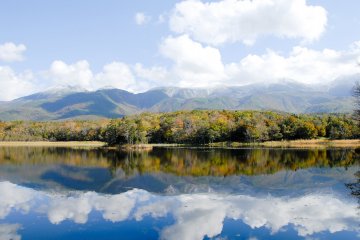
Hokkaido: Top 10 Things to Do
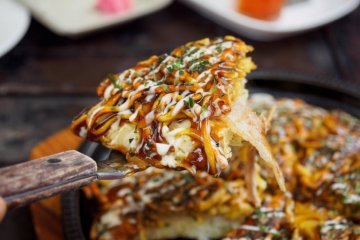
Hiroshima: Food Guide

CRAFT SAKE WEEK 2024

Tochigi: Top 10 Things to Do
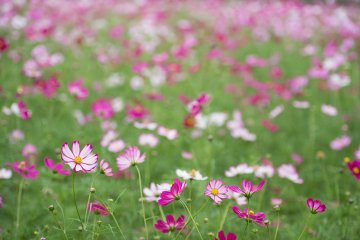
5 Spots to Enjoy Cosmos Flowers in Japan

Gunma Top 10: Attractions & Things to Do

Top 5 Things to Do Around Kochi City, Japan
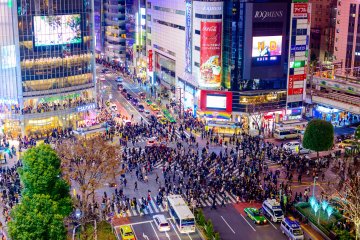
Shibuya Crossing
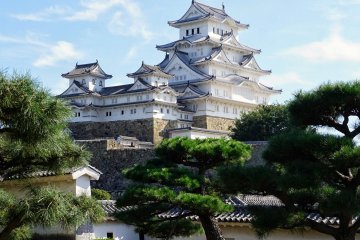
Come for the Castle, Stay for the Sake: Himeji
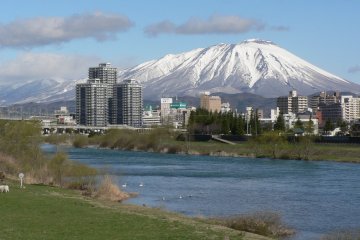
Top Attractions in Iwate

King Tacos in Kin Town
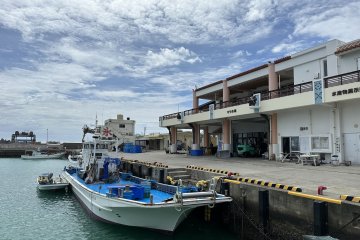
Uminchu Shokudo in Yomitan

Mikasa Matsuyama in Naha
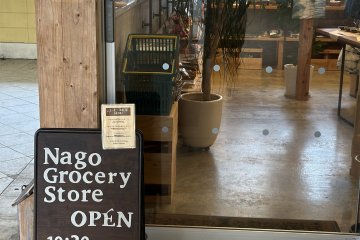
Nago Grocery Store
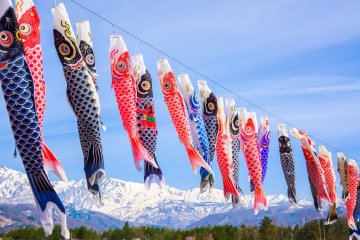
Guide to Golden Week

Haneda Airport Ranked World's Cleanest
Discover japan travel, know before you go with our guides, browse our event calendar for things to do, travel agency, concierge services and tours, destinations, find where to go in japan, featured on japan travel.
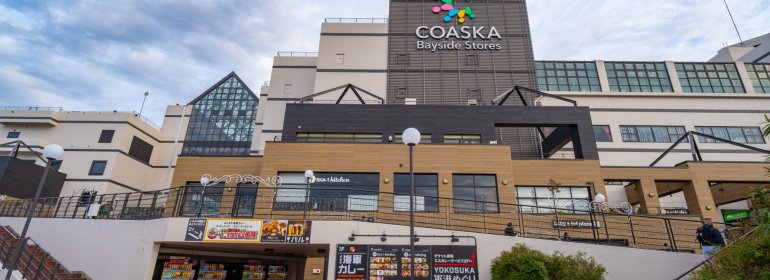
Coaska Bayside Stores
Shopping and dining with yokosuka port views.

A Kanagawa Adventure
Find an experience for you, top 10 on japan travel.
- Recommended

2024 Grand Sumo Tournaments

Tokyo Takes 2nd Place on Top Coffee Cities List


Valley of Witches: a New Ghibli Park Attraction

Kurobe Unazuki Canyon Route to Link with Tateyama Kurobe Alpine Route

Tokyo One of the World's Most Walkable Cities

Sapporo Beer Opens New Brewery in Tokyo’s Ebisu

Mount Omuro

Extraordinary Experiences in the Great Nature of Izu-Oshima, the Closest Island From Central Tokyo

Total Solar Eclipse in Japan

2-Day Hachijojima Retreat: Recharge Your Mind and Body

Universal Studios Japan to Open Donkey Kong Country Area in Spring 2024

The Ultimate Guide to Thrifting in Tokyo

Ueno Cherry Blossom Festival

Convenient Bus Travel From Narita Airport to Tokyo Station

Tokyo Named As a Budget-Friendly Travel Spot for 2024

The Wiener Sängerknaben Japan Tour

Guide to Bringing Medicines Into Japan

Your Name: Real-Life Locations in Tokyo

Hachiko Statue in Shibuya

Iwatayama Monkey Park

Daikoku Car Meet

Kanamara Penis Festival

Guide to Suica Cards

Guide to PASMO Cards

Japanese Urban Legends
Our travel agency, latest on japan travel, discover japan's prefectures, discover our community, latest reports from our members.
Let us know how we can help.
The 10 most wonderful places to visit in Japan

Mar 28, 2024 • 6 min read
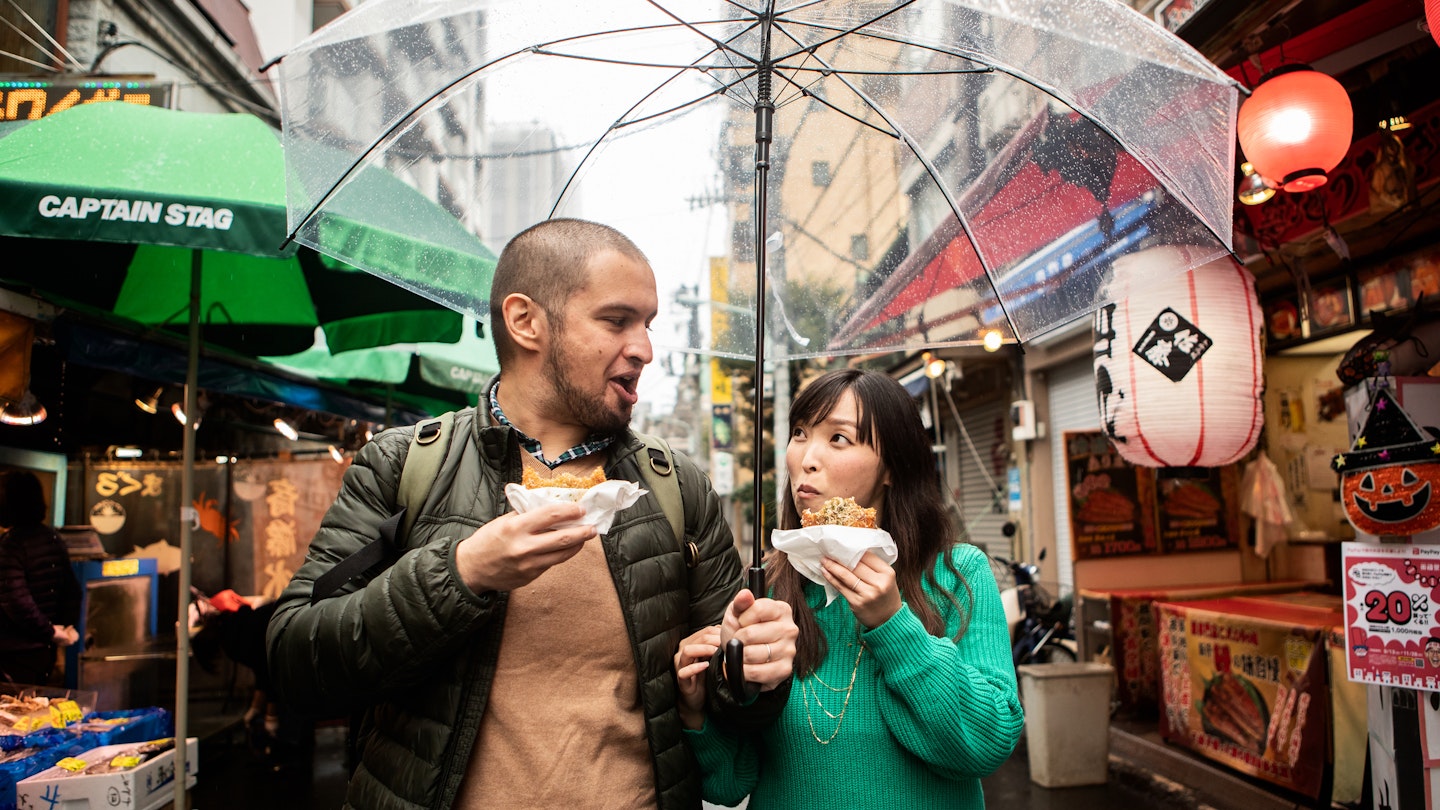
From buzzing cities to serene forest walks, these are our favorite places to visit in Japan © Taiyou Nomachi / Getty Images
Japan offers up a real feast for travelers, with mountainside onsen (hot spring) villages, beach-lined islands and buzzing megacities all on the menu.
You could arguably spend a lifetime sampling the country’s delights, but some towns and sights are staples – core ingredients to any great Japan trip. Here’s our pick of the 10 best places to visit in Japan .
Best for contemporary culture
Tokyo is a city forever reaching into the future, pushing the boundaries of what's possible on densely populated, earthquake-prone land, and building ever taller, sleeker structures.
It's Japan's top spot for contemporary art and architecture, pop culture, shopping, drinking and entertainment (and a tie with Kyoto for dining). But more than any other sight, it's the city itself that enchants visitors.
It's a sprawling, organic thing, stretching as far as the eye can see. Constantly changing with a diverse collection of neighborhoods , no two experiences of Tokyo are ever the same.
Planning tip: Tickets for sumo, kabuki and Giants baseball games usually go on sale one to two months in advance. The Imperial Palace and Ghibli Museum are other popular attractions that require prior planning.

Best for traditional experiences
Kyoto , Japan's imperial capital for a thousand years, is home to more than a thousand temples. Among them are the monumental, like Kinkaku-ji (an exquisite pavilion sheathed entirely in gold leaf), and the meditative, like Ryōan-ji , with its stark Zen rock garden.
And temples are only the beginning. There's the culture of tea, which you can appreciate at one of the city's many elegant teahouses; the art of the geisha, those iconic performers of traditional music and dance; and also a rich food culture, including kaiseki (Japanese haute cuisine).
3. Naoshima
Best for architecture
Naoshima is one of Japan's great success stories: once a rural island on the verge of becoming a ghost town, it's now a world-class center for contemporary art.
Many of Japan's most lauded architects have contributed structures, including museums, a boutique hotel and even a bathhouse – all designed to enhance the island's natural beauty and complement its existing settlements.
The resulting blend of avant-garde and rural Japan is captivating. It has also inspired some Japanese to pursue a slower life outside the big cities, relocating to Naoshima to open cafes and inns.
Planning tip: Try to plan your visit during one of the three exhibitions of the Setouchi Triennale festival, which happens during the spring, summer and fall every three years – the most recent was in 2022. Naoshima hosts various art, drama, music and dance events that make this festival really special.

Best for views and pilgrimages
Even from a distance, Mt Fuji will take your breath away. Close up, the perfectly symmetrical cone of Japan's highest peak is nothing short of incredible. Dawn from the summit? Pure magic.
Fuji-san is among Japan's most revered and timeless attractions. Hundreds of thousands of people climb it every year, continuing a centuries-old tradition of pilgrimages up the sacred volcano.
Those who'd rather search for picture-perfect views from the less-daunting peaks nearby will be following in the steps of Japan's most famous painters and poets.
Planning tip: The best time to climb Mt Fuji is during its official season, from July 1 through mid-September, which avoids the rainy season and snowfall. Always check for typhoon warnings before hiking in Japan.
5. Hiroshima
Best for introspection
Hiroshima today is a forward-thinking city with attractive, leafy boulevards. It's not until you visit the Peace Memorial Museum that the true extent of human tragedy wreaked by the atomic bomb becomes vividly clear.
A visit here is a heartbreaking, important history lesson. The park around the museum , much of which was designed by Japan's great modernist architect Tange Kenzō, offers many opportunities for reflection.
But the city's spirit of determination – as well as its food – will ensure that you'll have good memories to take with you when you leave.

6. Yakushima
Best for forest bathing
Yakushima, a small island off the coast of southern Kyūshū , is often described as magical and enchanting – otherworldly even. It's a place where words fail and clichés step in.
Home to some of Japan's last primeval forests, you'll find the yakusugi , an ancient cedar native to the island whose giant roots seem to form alien tentacles.
Hiking trails underneath them cover craggy terrain, often fuzzy with moss. The landscape here is believed to have inspired the iconic Studio Ghibli animated film, Princess Mononoke .
Detour: When you're not hiking, stop by the Yakusugi Museum to learn more about the importance of yakusugi to the islanders of Yakushima. An English audio guide is available.
7. Koya-san
Best for exploring temples
Riding the funicular up to the sacred Buddhist monastic complex of Kōya-san feels, appropriately, like ascending to another world.
There are over a hundred temples here, the highlight of which is Oku-no-in , where paths weave their way among towering cryptomeria trees and time-worn stone stupas covered in moss and lichen.
Other temples offer a different experience: the chance to spend the night, dine on traditional vegetarian Buddhist cuisine and wake up early for morning meditation with the resident monks.
Planning tip: Though Japanese temples and shrines do not have established dress codes, visitors are expected to stay relatively quiet in these sacred spaces.
8. Okinawa and the Southwest Islands
Best for beaches
Okinawa and the Southwest Islands offer a totally different experience from the rest of Japan. This semi-tropical archipelago forms an arch between Kyūshū and Taiwan .
Until the islands were annexed by Japan in the 19th century, they formed their own kingdom – the Ryūkyū Empire – and the cultural differences are apparent in everything from the architecture to the food.
This is where you'll find Japan's best beaches, like those on the Yaeyama Islands and the Kerama Islands, with sugar-white sand fringed with palms and turquoise waters. Bask in the sun, or snorkel and scuba dive.
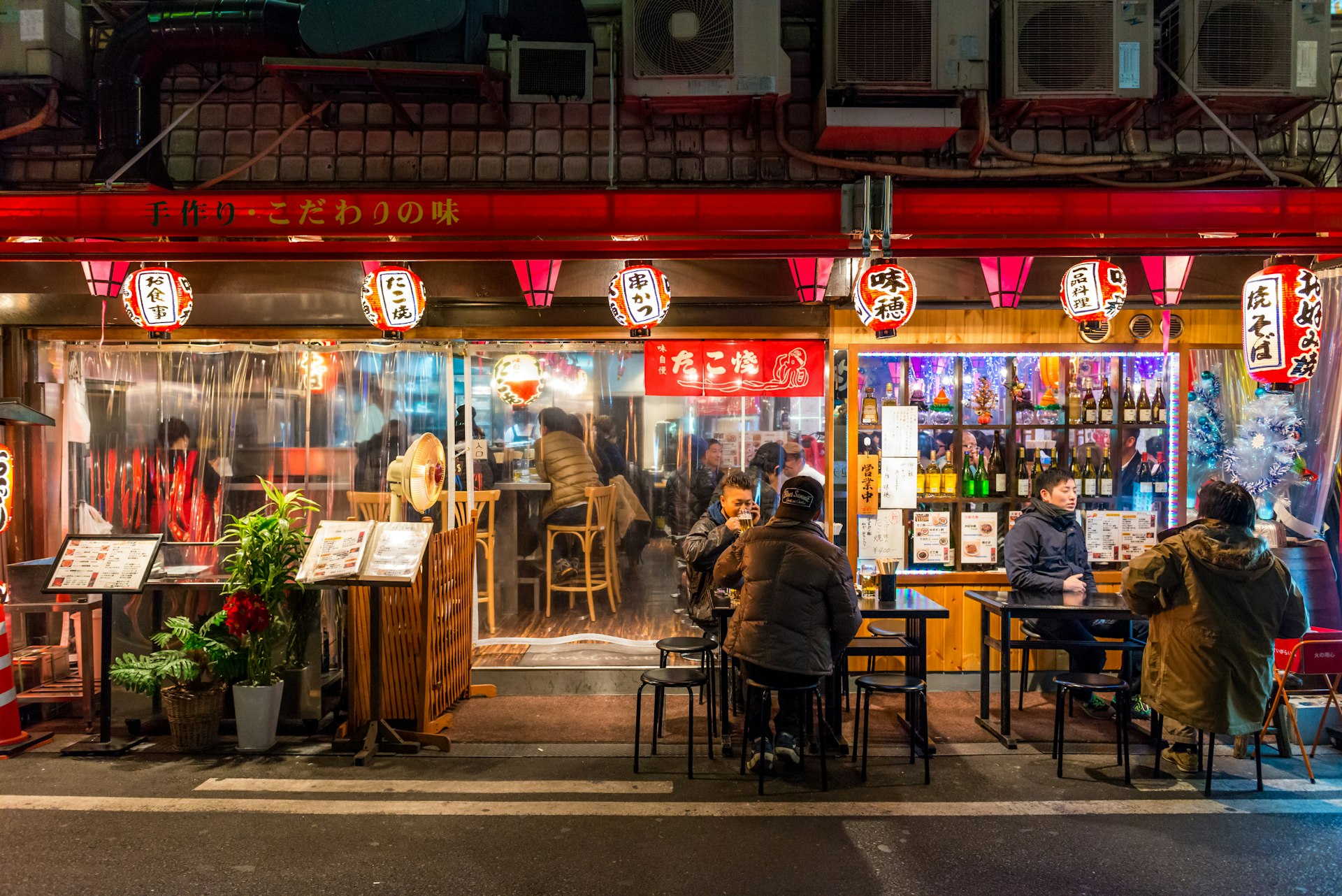
Best for street food and nightlife
Tokyo doesn't nab all the superlatives when it comes to urban experiences. Osaka , Japan's third-largest city, is tops for street food: don't miss its signature dish, takoyaki (grilled octopus dumplings).
It also has the most dramatic of nightscapes: a dazzling display of LED lights, animated signage and flashing video screens along the canalside strip Dōtombori .
The city, Japan's oldest merchant center, has a pace, spirit and zest for life all of its own; its unofficial slogan is kuidaore (eat until you drop).
Planning tip: In addition to nightly accommodation fees, Osaka hotels will typically charge an accommodation tax that varies depending on the standard nightly rate.
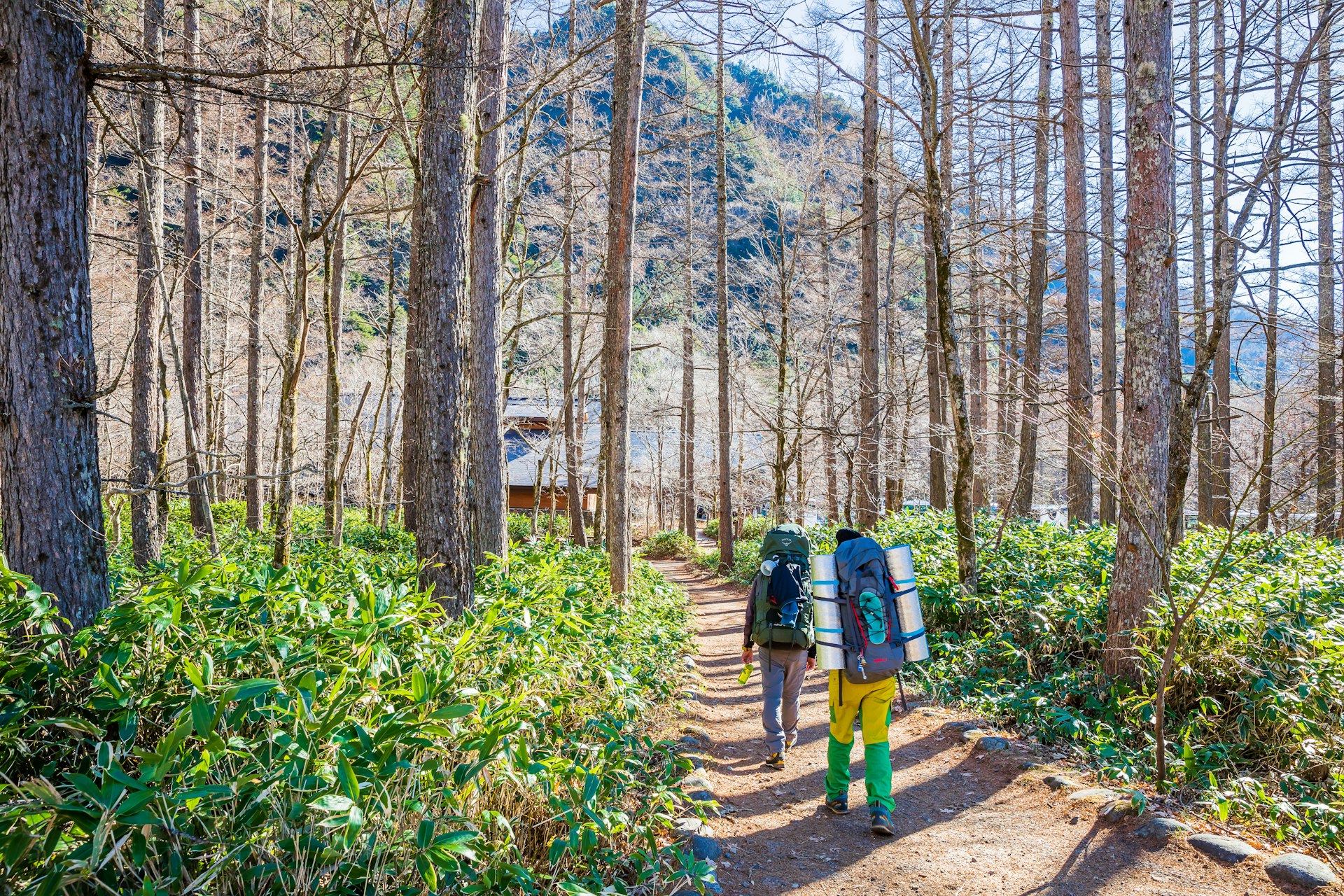
10. Kamikōchi
Best for mountain hikes
One of Japan's most stunning natural vistas, Kamikōchi is a highland river valley enveloped by the soaring peaks of the Northern Japan Alps .
Easy day hikes are possible along the Azusa-gawa, following the pristine river through tranquil forests of willow, larch and elm.
The birthplace of Japanese alpinism, Kamikōchi is also the gateway for more challenging treks up some of the country's tallest mountains, such as Yari-ga-take (3180m/10,433ft). Private cars are banned from Kamikōchi, which lessens the impact of the crowds.
This article was first published April 2021 and updated March 2024
Explore related stories
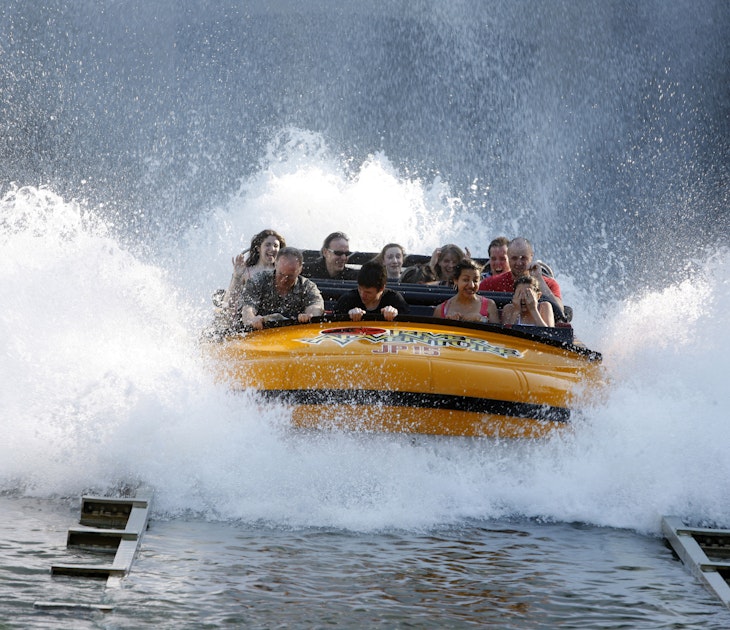
Apr 14, 2024 • 6 min read
Florida is famous for sun and sand, but for many families it's all about the theme parks. Here's our pick of the best theme parks in the Sunshine State.

Apr 3, 2024 • 17 min read

Mar 31, 2024 • 7 min read

Mar 28, 2024 • 7 min read

Mar 26, 2024 • 8 min read

Mar 25, 2024 • 6 min read
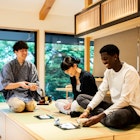
Mar 23, 2024 • 7 min read
- Media & Industry
- Meetings & Events
- Select Language 简体中文 繁體中文(香港) 繁體中文(臺灣) India (English) Bahasa Indonesia 한국어 ภาษาไทย Tiếng Việt Singapore (English) Philippines (English) Malaysia (English) Australia/New Zealand (English) Français Deutsch Italiano Español United Kingdom (English) Nordic countries(English) Canada (English) Canada (Français) United States (English) Mexico (español) Português العربية Japan(日本語) Global (English)
- India (English)
- Bahasa Indonesia
- Singapore (English)
- Philippines (English)
- Malaysia (English)
- Australia/New Zealand (English)
- United Kingdom (English)
- Nordic countries(English)
- Canada (English)
- Canada (Français)
- United States (English)
- Mexico (español)
- Global (English)
- Fujiyoshida
- Shimonoseki
- Ishigaki Island
- Miyako Island
- Kerama Island
- Tokyo Island
- Koka & Shigaraki
- Hida Takayama
- Ginza, Nihonbashi
- Beppu & Yufuin (Onsen)
- Ginzan Onsen
- Nagasaki Islands

- Kumano Kodo
- Shikoku Karst
- Amami Oshima
- Hachimantai
- Omihachiman
- Aizuwakamatsu

- Diving in Japan
- Skiing in Japan
- Seasonal Flowers in Japan
- Sustainable Outdoors
- Off the Beaten Track in Japan
- Scenic Spots
- World Heritage
- Home Stays & Farm Stays

- Japanese Gardens
- Japanese Crafts
- Temple Stays
- Heritage Stays
- Festivals and Events
- Theater in Japan
- Japanese Tea Ceremony
- Cultural Experiences in Japan
- Culture in Japan

- Local Cuisine Eastern Japan
- Local Cuisine Western Japan
- Local Street Food
- Japan's Local Ekiben
- Japanese Whisky
- Vegetarian and Vegan Guide
- Sushi in Japan Guide
- Japanese Sake Breweries

- Art Museums
- Architecture
- Performing Arts
- Art Festivals
- Japanese Anime and Comics
- Japanese Ceramics
- Local Crafts

- Scenic Night Views
- Natural Wonders
- Theme Parks
- Samurai & Ninja
- Iconic Architecture

- Wellness Travel in Japan
- Japanese Ryokan Guide
- A Guide to Stargazing in Japan
- Relaxation in Japan
- Forest Bathing (Shinrin-yoku)

- Experiences in Japan
- Enjoy my Japan
- National Parks
- Japan's Local Treasures
- Japan Heritage
- Snow Like No Other
- Wonder Around Japan

Visa Information
- Getting to Japan
- Airport Access
- COVID-19: Practical Information for Traveling to Japan
- Anime Tourism
- Countryside Stays
- Accessible Tourism
- Hokkaido Great Outdoors
- Scenic World Heritage in Tohoku
- Shikoku’s Nature and Traditions
- Southern Kyushu by Rail

- Traveling by Rail
- How to Travel by Train and Bus
- JR Rail Passes
- Scenic Railways
- Renting a Car
- Sustainable Travel in Japan
- Travel Brochures
Useful Apps
Online Reservation Sites
- Eco-friendly Accommodation
- Luxury Accommodations
Traveling With a Disability
- Hands-free Travel
- How to Book a Certified Tour Guide
- Volunteer Guides
- Tourist Information Center

- Japanese Manners
- Spring in Japan
- Summer in Japan
- Autumn in Japan
- Winter in Japan
- Cherry Blossom Forecast
- Autumn Leaves Forecast

Japan Visitor Hotline
- Travel Insurance in Japan
- Japan Safe Travel Information
- Accessibility in Japan
- Vegetarian Guide
Muslim Travelers
- Safety Tips

- JAPAN Monthly Web Magazine
- Arts & Cultures
- Nature & Outdoor
- Festivals & Events
- Insider Blog
- Things to do
- Local Guides
- Food & drink
- Traditional
- Hokuriku Shinetsu

My Favorites
${v.desc | trunc(25)}
Planning a Trip to Japan?
Share your travel photos with us by hashtagging your images with #visitjapanjp

First-Time Visitor Info
- Plan Your Trip
Smooth your way with a little forward planning
It is easy to feel a little overwhelmed and disoriented when you visit Japan for the first time, so find out the basics before you fly and get acquainted with the country through our helping you plan guide.
Learn a little more about Japan's customs, culture and Wi-Fi connectivity, as well as its seasonal weather, geography and luggage delivery options. Many of the questions first-time travelers might have are answered here, along with insider tips and practical advice to help you navigate the country with confidence.
Japan's official language is Japanese, but English is generally understood in major cities and designated tourist sites.
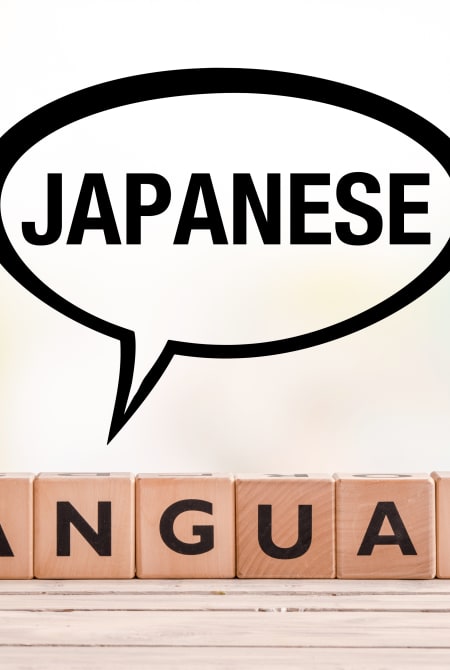
All of Japan sits within the same time zone, and no daylight saving is practiced. The country is nine hours ahead of GMT.
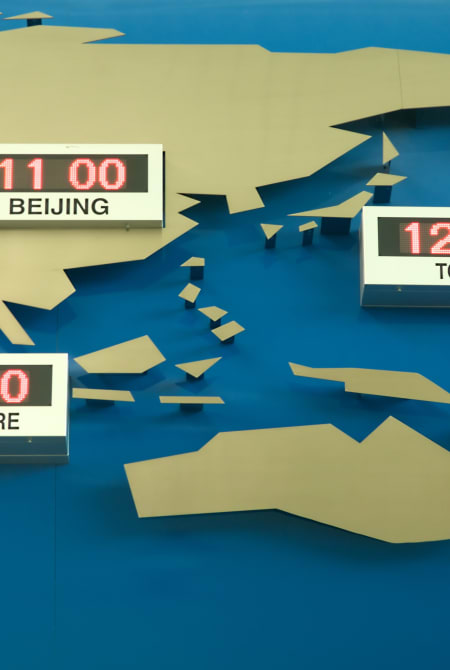
Wi-Fi & Connectivity
Wireless hotspots are popping up all over major cities in Japan, so you should never be too far from a Wi-Fi connection.
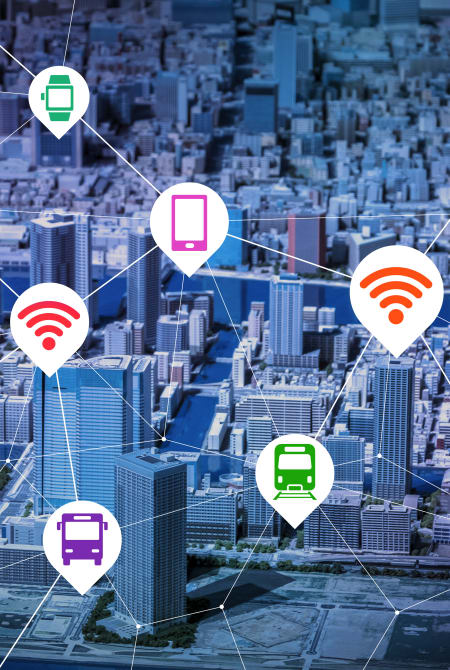
Plugs & Electricity
Japan uses two flat parallel prong plugs. For guaranteed charging of your electrical necessities, purchase a plug adapter beforehand.
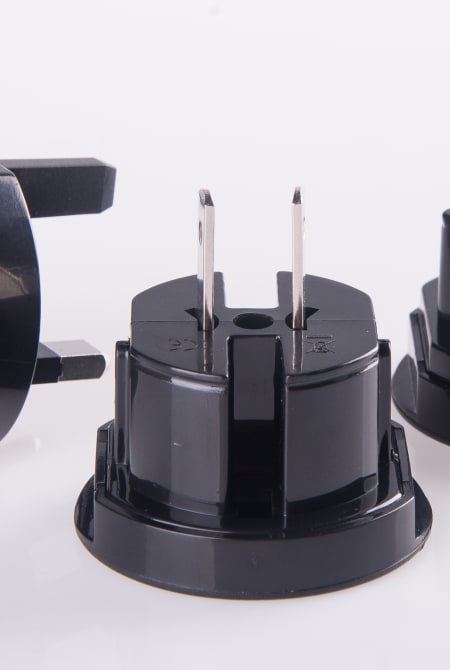
The Japanese yen is used throughout the country and you can exchange foreign currency at the airports and most major banks.
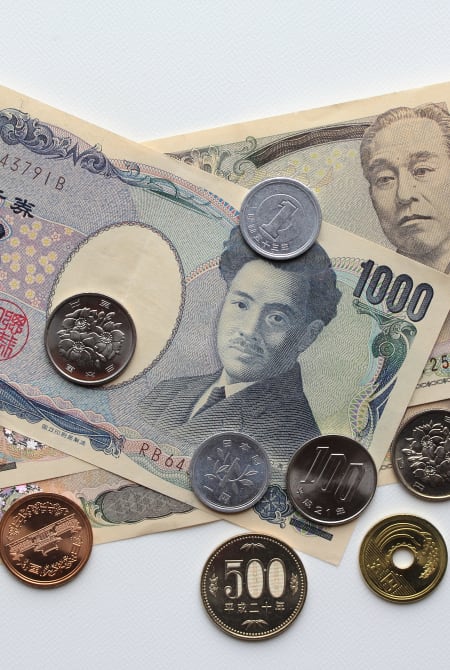
Tax-Free Shopping
Visitors to Japan are eligible for tax exemption on many consumer goods. The process of receiving your tax back can vary from store to store.

Tipping is not practiced in Japan. In fact, it can cause discomfort and confusion if you do. A service charge is generally added on to the final bill in restaurants.
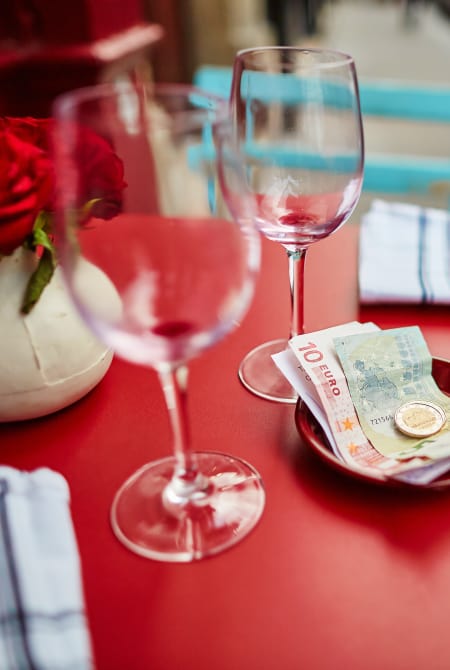
Credit Cards
Even though Japan is a cash-centric country, credit cards are usually accepted in most shops, restaurants and taxis in major cities.

Weather (When to Visit)
The weather in Japan can vary wildly depending on where you are traveling to. Find out the best times to visit and what to pack.

Please check the latest information on Ministry of Foreign Affairs (MOFA) website or contact the Japanese embassy/consulate in your country/region of residence.
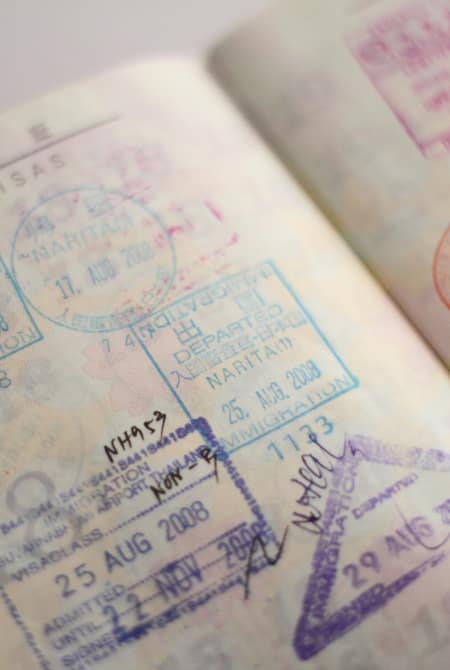
International Tourist Tax
Visitors to Japan pay a 1,000 yen departure tax to expand and enhance the country’s tourist infrastructure—a small tax that will make a significant difference.
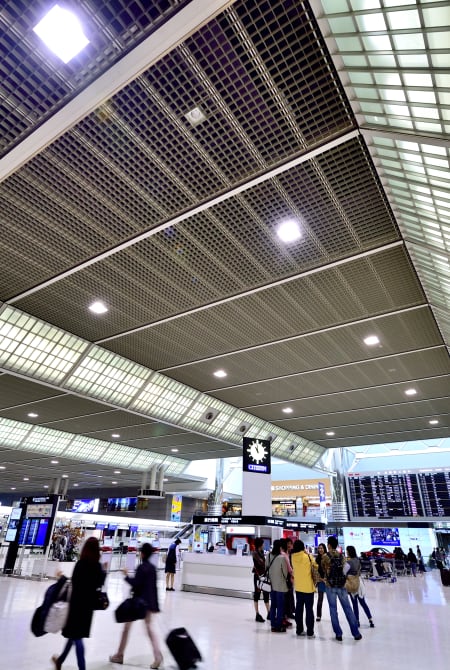
Japan National Tourism Organization (JNTO) operates a visitor hotline 24 hours a day, 365 days a year.

Customs & Duty
The Japan Customs official page is your most trustworthy source to answer any questions or queries related to Japanese customs and duty.
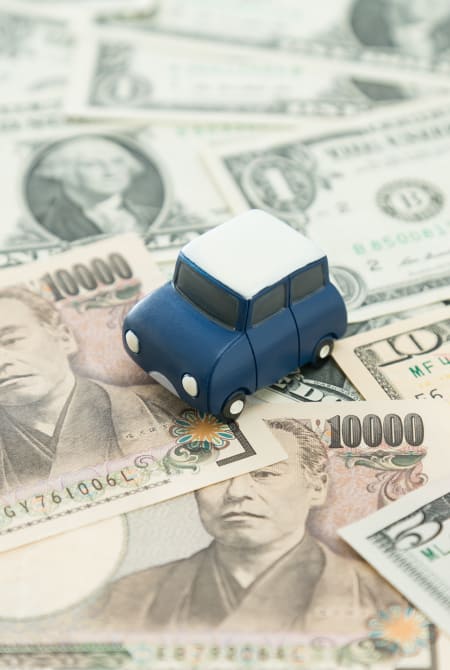
IC Travel Cards
Make your journeys as smooth as the public transportation you will ride on by purchasing a chargeable IC travel card.
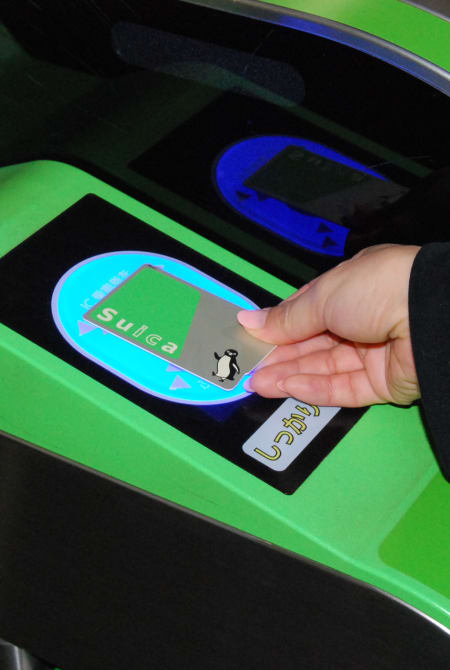
Drinking Water
While bottled water is readily available all over Japan—including in the infinite vending machines—the tap water is perfectly safe to drink.
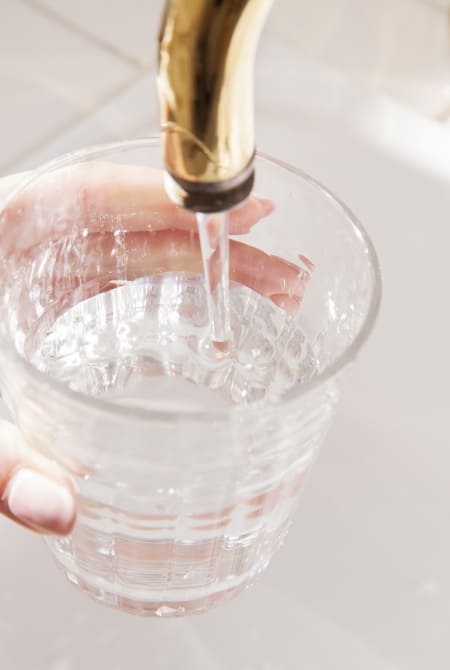
Luggage Storage & Delivery
If you don't wish to haul your luggage around with you, drop your bags and cases off at the delivery service kiosks located at the airports.
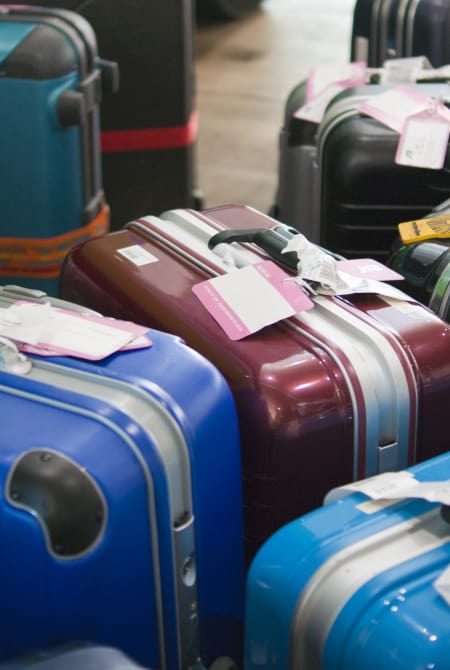
Tips for Budget Travels
To stretch your yen as far as possible, research into discounted travel and accommodation, as well as eating options that won't break the bank.
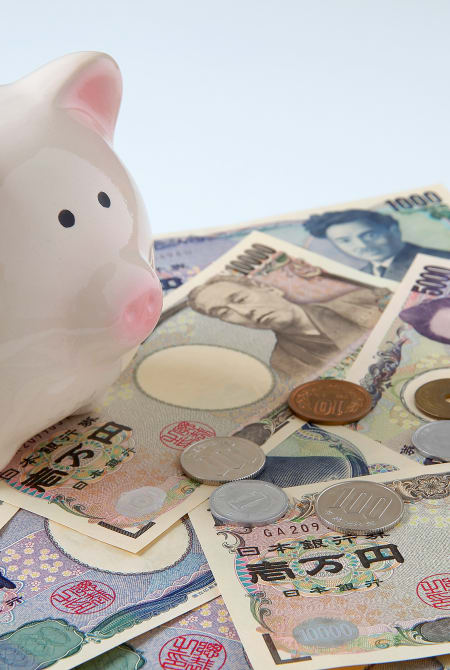
Staying Safe in Japan
If you do find yourself in a situation that requires serious help, dial 110 for an urgent call to the police and 119 for fire or ambulance.

Your embassy is there to help and support you if you should need it. Make sure you know how to get in touch.
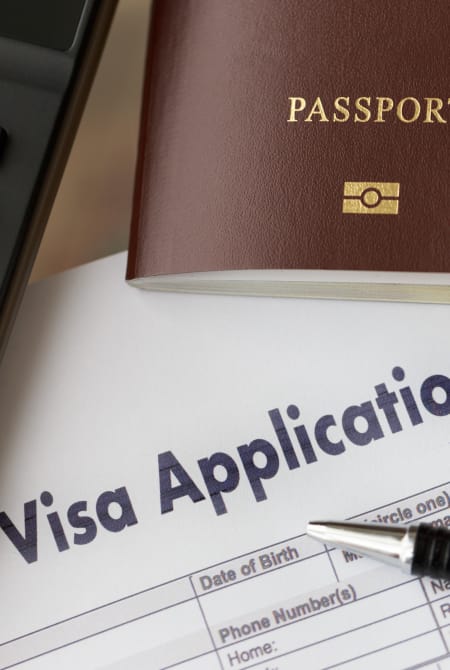
Custom & Manners
Following a general travelers code of respect for the people you meet and places you visit will stand you in good stead.
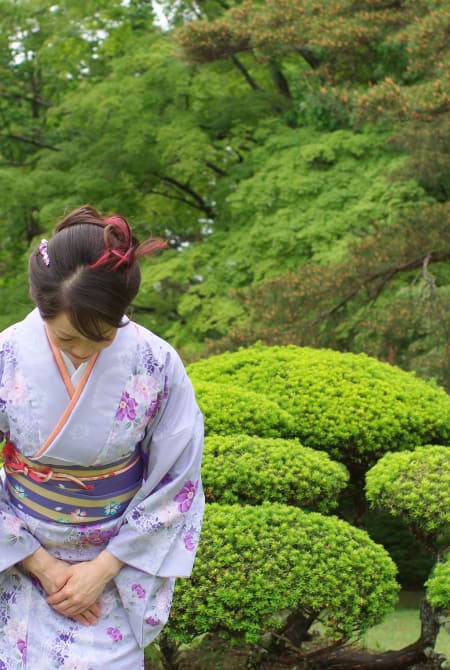
Make sure you are aware of the local laws in Japan as ignorance is not accepted as a valid line of defense.

Business Hours & Holidays
Avoid closed doors and fully-booked hotels by finding out the Japanese business hours for major businesses, services, and facilities, and the dates of the major holidays.

Download a selection of apps to make your trip to Japan run even smoother. Choose from a list of all-round, navigation, sightseeing and accommodation applications.
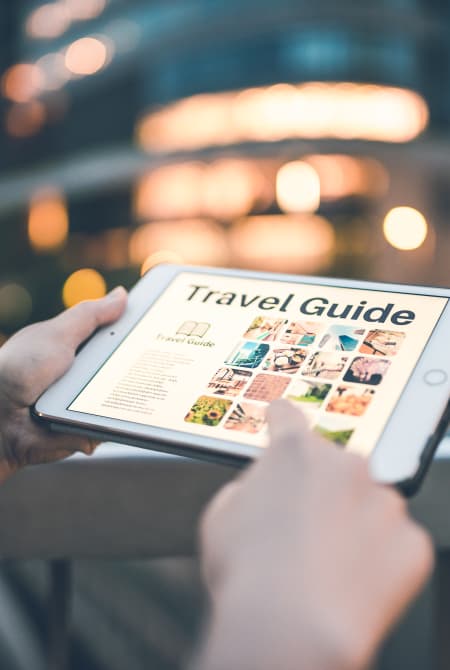
Postal Services
Instead of just an email, send a postcard back home to let friends and family know about your Japanese adventure.
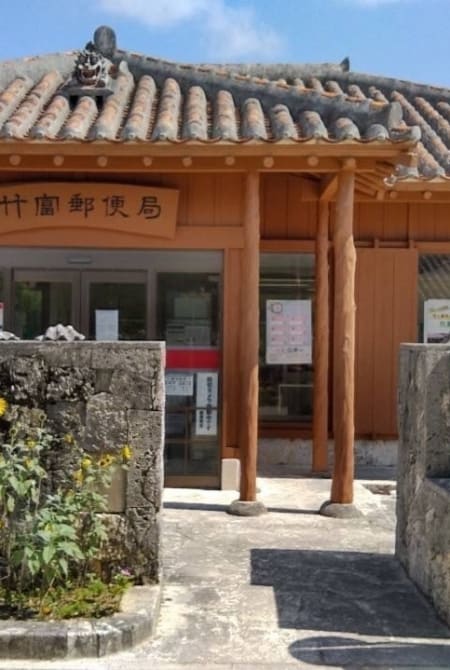
Telephone Calls
While modern technology enables you to connect with friends and family around the world from the palm of your hand, there still might be times when you need to make use of public telephones.
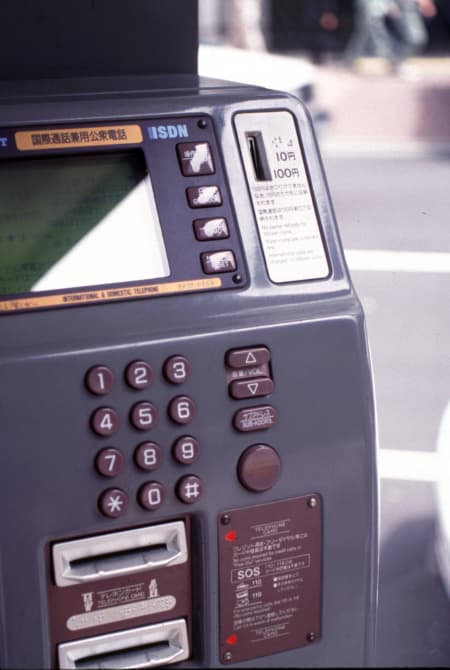
Book your stay in Japan through one of these useful sites offering a wide range of accommodation options.
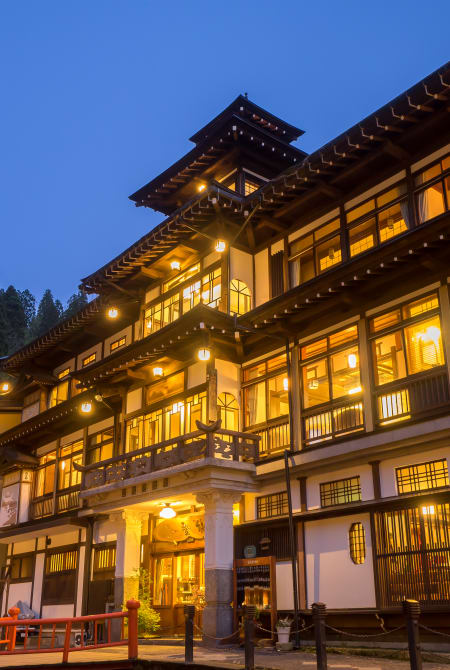
At major train stations, airports, and hotels, as well as in most newer shopping centers and theaters in the city, the disabled traveler or wheelchair user should have little trouble getting from place to place.

Traveling With Children
Traveling to Japan with children may seem like a daunting prospect and something best avoided, however, the country is surprisingly accessible.
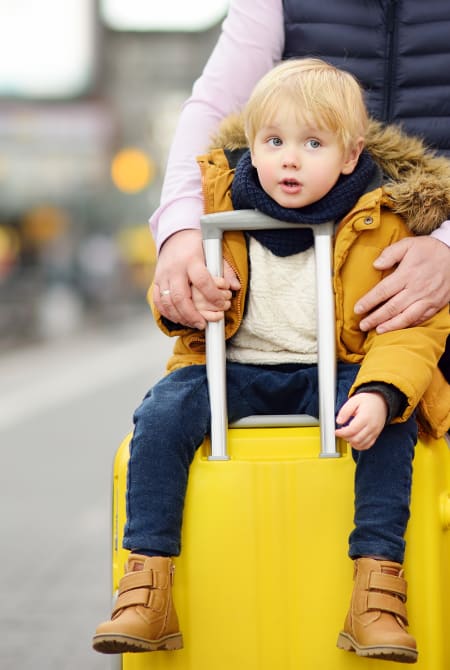
Japan continues to enhance its hospitality for Muslim travelers through the introduction of Muslim-friendly facilities.

Please Choose Your Language
Browse the JNTO site in one of multiple languages
Plan your trip
Before you go, transportation, tours and activities, accommodation, suggested itineraries.

Nomadic Matt's Travel Site
Travel Better, Cheaper, Longer
The Ultimate Japan Itinerary for First-Timers: From 1 to 3 Weeks

I’ve yet to meet a traveler who didn’t love their time in Japan . It’s just one of those countries that everyone loves. How can you not? The food is carefully crafted and delicious; the history and culture are both rich and long; the landscape breathtaking; and the people super friendly and polite.
Japan remains one of my favorite countries. No matter how long I visit, it’s never enough. I always leave wanting more.
But the country always seems forbidding to many travelers. It definitely still has that “exotic” stereotype that makes people think it’s hard to travel around.
Where should you go? What should you include in your Japan itinerary? Should you buy a JR Pass to help you get around?
To help you out, here are a few suggested itineraries based on my years of visiting that will ensure you see the best sites on your Japan trip — as well as get off the beaten path and get a real sense of Japanese culture!
Table of Contents
Japan Itinerary: Know Before You Go
Japan itinerary: one week, japan itinerary: two weeks, japan itinerary: three weeks.

Just be sure to get one BEFORE you go as you cannot purchase them on arrival. For more information on the pass, including how much they cost and how you can get one, read this blog post . It has everything you need to know!
Mobile Data in Japan In Japan, English isn’t widely spoken (especially outside of the major cities) so having access to the internet is vital for checking addresses, using translation apps, and looking up things to see and do. The easiest way to get data is through an international eSIM for Japan .
An eSIM allows you to access mobile data via a QR code so you can have internet wherever you are, without worrying about physical SIM cards or roaming charges. This will save you a lot of time and hassle when using apps like Google Maps, Google Translate, Instagram, and YouTube. It will also come in handy for checking menus at restaurants (since they are rarely in english).

Day 1 & 2: Tokyo Chances are you’ll be starting your trip in Tokyo , since it’s home to the country’s biggest international airport. If your trip is seven days long, activate your JR Pass right away, so that you can take advantage of the free JR trains that run through the city.
While you could easily spend your entire week in Tokyo and not get bored, here are some of the highlights:
Visit the fish market – Toyosu is the world’s largest fish market. The daily auction here powers much of the world’s sushi supply, and it is truly an absolute must-see! You can go for free, but food and drink tours of the Tsukiji Outer Market are available for around 14,500 JPY.
See Sensoji Temple – Sensoji is beautifully painted and sits in a scenic spot near a five-story pagoda and the famous Kaminari Gate. There’s a huge statue of Kannon, the goddess of mercy, inside the main hall. It’s always busy but is worth seeing with your own eyes. The temple is free to visit.
Drink in Golden Gai – This alleyway of back-street bars is a lively place to drink at night and has a bit of a red-light-district feel to it. It is not to be missed. Even if you don’t drink, be sure to wander about. Arigato Tours offers tours of the area where you’ll learn about the neighborhood while stopping to sample Japanese classics like sushi, yakitori, and ramen. Tours are 23,900 JPY and include a drink and dishes at four food stops.
Visit the Imperial Palace – The home of the emperor of Japan was built in the 15th century, and while you can’t go inside, the palace and its grounds are a peaceful place for a stroll.
Watch a sumo match – If you’re in town at the right time, this is a must-do . Tickets sell out quickly, so book early. Expect to pay around 11,000-13,000 JPY.
If you have more time, consider taking a day trip to Kamakura to see the giant Buddha statue (Daibutsu). It is over 13 meters (42 feet) tall and dates back to the 13th century. The journey is around 90 minutes each way — and free with the JR Pass !
For delicious food, some of my favorite bars and restaurants include: Uogashi Nihon-Ichi (Standing Sushi Bar), Nemuro Hanamaru KITTE Marunouchi, Motodane, Tokyo Whisky Library, Ichiran Shibuya, and Uohama.
WHERE TO STAY IN TOKYO : Hostel Chapter Two – A small, family-run hostel not far from Skytree Station in Asakusa. I really like the shared kitchen and common room, as there’s a real social feel to them.

With its beauty come lots of crowds though, so try to visit outside of the busy summer months. Even with lots of tourists, though, the city is still magnificent and has a lot to offer. Some things to see and do that you shouldn’t miss are the following:
Visit the Golden Pavilion – This famous (and picturesque) temple dates to the 1950s, when a monk burned down the previous temple (from the 14th century) while trying to commit suicide. It’s a UNESCO World Heritage Site and one of the most-visited destinations in the country!
Explore Gion – Gion is the historic geisha district. Stroll along the main street and see ochaya s (teahouses where geishas entertain), the small shops, and the many restaurants that line the district’s streets. You can take a walking tour of Gion for 1,800 JPY.
Wander in the Bamboo Forest – For a relaxing break, head to Arashiyama and let the calm swaying of the forest envelop you. Located near the famous Tenryu-ji temple, it’s one of the most beautiful places in the entire country. Arrive early if you want to enjoy it without the crowds. Kyoto Bike Tours offers an early-bird bike tour for a guided way to do just that.
Admire Ryoan-ji temple – This is my favorite temple in Kyoto. It’s a UNESCO World Heritage Site and home to a mausoleum that houses the remains of seven emperors. The traditional rock and sand garden is considered one of the best in the country.
For a half-day trip, you can also visit Nara. It’s a small city just one hour from Kyoto. Nara was the capital of Japan in the eighth century, so there are lots of buildings and temples here that are upwards of a thousand years old (which is rare in Japan, due to fires, as well as World War II). But the real draw in Nara are the deer.
Since the 17th century, those in and around the city have been considered sacred. You can buy crackers to feed them or just watch them stroll around carefree. A guided half-day walking tour that includes all of Nara’s highlights as well as a traditional lunch is 11,500 JPY.
While you’re here, don’t miss a visit to Todai-ji. It’s the world’s largest wooden building and is home to a 16-meter (52-foot) Buddha statue. It was built in 738 CE and is now a UNESCO World Heritage Site. Admission is 600 JPY.
WHERE TO STAY IN KYOTO : Backpacker Hostel K’s House – A fun, social backpacker hostel in a great central location. The rooftop terrace is a cool spot to hangout and meet other travelers after a day of exploring.

Don’t miss Osaka Castle though. While it’s not the original (this version dates to 1931), it’s nevertheless an impressive sight. It’s home to a small but insightful museum and an observation deck that offers some picturesque city views.
And be sure to stroll down Dotonbori (ideally at night), the main street, which is lined with restaurants, stores, and tons of neon lights and signs. A guided walking tour that includes Dotonbori as well adjacent neighborhoods is 6,500 JPY.

Today, Hiroshima is thriving . Don’t miss the Atomic Bomb Museum, which depicts the history of the city before and after that fateful day. It has photos, artifacts, videos, and information about the effect of radiation on the population. It’s a sobering experience but one that should not be missed.
If you feel like getting out of town afterward, head to Miyajima , an island that offers a place to hike and enjoy nature. You can also take a cable car to the peak of the mountain to take in the view. A one-way ferry ride to the island takes 10 minutes and is free to JR Pass holders.
WHERE TO STAY IN HIROSHIMA : Roku Hostel – A cozy, small hostel with a rustic atmosphere and design. It feels like you’re staying with a friend here, and the beds are super comfy too.

If you like history, don’t miss the Hida Minzoku Mura Folk Village, home to a collection of traditional thatch-roof houses that you can enter to further immerse yourself in the country’s past.
This city (and region, really) is famous for its Hida beef, a high-fat variety that’s even better than any A5 Wagyu you might have. It just melts in your mouth. Be sure to have some while you are here!
The Japanese Alps are not far from here as well, so if you love hiking and want to extend your time in the region, head to Kamikochi for a day hike or overnight trip. It’s just an hour away and has both easy and moderate trails, which are open from April to November. Hiking trails can also be found in Hakusan National Park (also just one hour away by car).

One of the more unique temples in Japan is here too: Ninja (Myoryuji) Temple. While the temple wasn’t home to actual ninjas, Myoryuji was built as a defensive structure (strict laws forbade local lords from building defenses, so they were hidden in the temple to circumvent the rules). These include hidden rooms, secret tunnels, and a maze of staircases and halls to confuse enemies.
If you need a break from exploring cities, Hakusan National Park, home to Mount Haku, one of the three holy mountains, is just an hour south of town.

If you’re here in April, there are incredible cherry blossom displays that are famous in the region. And, just like Takayama, Matsumoto is close to the Japanese Alps, so you’re just a stone’s throw from some of the best hiking in the country.

There are tons of hotels (both modern and traditional) that have their own hot springs (often both indoors and outdoors). It’s the perfect place to wrap up a trip, relax, and take in the views.
In addition to getting a copious amount of R&R, be sure to ride the cable car up the mountain for even more amazing views. The area is surrounded by craters from an inactive volcano that erupted 80,000 years ago (not to be confused with nearby Mount Fuji, which is an active volcano), and you’ll find lots of vendors at the top selling eggs cooked in the sulfurous waters. It’s said the eggs prolong one’s life by seven years, so feel free to give them a try!
If you prefer to hike up instead, the trail is open between July and September, with the trek taking anywhere from 5 to 12 hours, depending on your level of fitness. Typically, hikers leave at night in order to arrive at the summit by dawn. There are little shops along the way that sell food and even beds you can rent in advance if you want to split your journey up. Just make sure you do your research and prepare in advance as it’s a tough hike!
If you really want to play tourist, you can also ride a mock pirate ship around the lake for more views of the mountains, and Mount Fuji in particular.
Full-day tours around Hakone that include all the main sights cost 14,800 JPY.
WHERE TO STAY IN HAKONE : Hotel Green Plaza – With gorgeous views of Mount Fuji, a huge buffet dinner (with both Western and Japanese options), and a private onsen where you can relax and enjoy the view, this is one of the best places to stay in Hakone if you want value but don’t want to break the bank.

Using the suggestions above, here’s how I would organize your itinerary:
- Days 1-3 : Tokyo
- Day 4 : Mount Fuji or Hakone
- Day 5 : Takayama
- Days 6 & 7 : Kanazawa
- Days 8 & 9 : Matsumoto
- Days 10-12 : Kyoto
- Days 13 & 14 : Osaka
- Days 15 & 16 : Hiroshima

If you do want to spend a few hours in Hakodate, don’t miss the Morning Market, where you can find lots of fresh seafood. You can also visit Fort Goryokaku, the first “Western”-style fort in the country.

Be sure to stop in at the local Beer Museum too, owned by Sapporo Breweries (the oldest beer company in the country). It showcases the history of beer in Japan and how the business got its start. If you’re a whiskey fan, stop by The Bow Bar, home to some rare (and expensive) whiskeys and considered one of the best such bars in the world.
What I love about the city is its location. This region has some of the best hiking in the country. There are plenty of hills and mountains, offering options for both day hikes as well as overnight trips. Some highlights include Mount Me-akan, Mount Asahim, Mount Mashu, and Nishibetsu-dake. For the best views of the city, head to Mount Moiwayama. It’s just a 30-60-minute hike to the top, though there is a cable car you can take as well.
And if you’re visiting in the winter, hit the slopes! There are over a hundred ski resorts in Hokkaido. You can rent skis (or a snowboard) for around 10,000-18,000 JPY. Lift prices are usually 4,000-6,000 JPY per day. In the winter, don’t miss the annual Sapporo Snow Festival. It’s held every February and draws over two million visitors. There are ice sculptures, igloos, live music, and delicious local foods on offer.
Additionally, be sure to take a day trip to Otaru, where you’ll find some of the freshest uni in the whole country (this is the main area where the famed Hokkaido uni is caught). Go hungry and visit the markets, stalls, and shops around there.
WHERE TO STAY IN SAPPORO : Waya Hostel – This is a laid-back, colorful hostel with a social atmosphere that makes meeting people a breeze. It has a homey, DIY feel and is perfect for budget travelers looking for a no-frills place to crash.

There is a ton to see and do in Japan , and you could easily spend another month here and still just scratch the surface (we didn’t even get to Okinawa and the islands!). And while these itineraries are a bit fast-paced, Japan isn’t cheap, so budget travelers need to move around the country quickly to avoid breaking the bank.
But no matter how long you visit, you won’t be disappointed. Japan is an amazing, beautiful, and unique destination that I never get tired of visiting. While it’s not as affordable as its neighbors, there are still plenty of ways to save money , and it’s definitely worth spending the time (and money) visiting. You won’t be disappointed!
Just make sure to get your Japan Rail Pass before you go!
Book Your Trip to Japan: Logistical Tips and Tricks
Book Your Flight Find a cheap flight by using Skyscanner . They are my two favorite search engines, because they search websites and airlines around the globe, so you always know no stone is left unturned!
Book Your Accommodation You can book your hostel with Hostelworld as they have the most comprehensive inventory so they are best for booking a hostel. If you want to stay in a hotel or guesthouse in Japan, use Booking.com as it consistently returns the cheapest rates for guesthouses and hotels.
Don’t Forget Travel Insurance Travel insurance will protect you against illness, injury, theft, and cancelations. It’s comprehensive protection in case anything goes wrong. I never go on a trip without it, as I’ve had to use it many times in the past. My favorite companies that offer the best service and value are:
- Safety Wing (best for everyone)
- Insure My Trip (for those over 70)
- Medjet (for additional evacuation coverage)
Looking for the Best Companies to Save Money With? Check out my resource page for the best companies to use when you travel! I list all the ones I use to save money when I travel — and I think they will help you too!
Be sure to check out the Japan Rail Pass if you’ll be traveling around the country. It comes in 7-, 14-, and 21-day passes and can save you a ton of money!
Looking for More Travel Tips for Japan? Check out my in-depth Japan travel guide for more ways to save money; information on costs; tips on what to see and do; suggested itineraries, reading, and packing lists; and much, much more!
Got a comment on this article? Join the conversation on Facebook , Instagram , or Twitter and share your thoughts!
Disclosure: Please note that some of the links above may be affiliate links, and at no additional cost to you, I earn a commission if you make a purchase. I recommend only products and companies I use and the income goes to keeping the site community supported and ad free.
Related Posts

Get my best stuff sent straight to you!
Pin it on pinterest.

IMAGES
VIDEO
COMMENTS
The official site of Japan National Tourism Organization is your ultimate Japan guide with tourist information for Tokyo, Kyoto, Osaka, Hiroshima, Hokkaido and other top Japan holiday destinations. We offer travel information to make your Japan travel more comfortable and enjoyable.
Official Japan National Tourism Organization, providing free advice and information to Travelers.
Japan reopened to independent international tourists on 11 October 2022. Remaining restrictions were dropped on 29 April 2023, so visitors no longer need to show proof of vaccination or a negative Covid test. The government also dropped the indoor masking recommendation.
Your official Japan travel guide. Explore Japan. Negoro-ji Temple, Wakayama Prefecture. Top Stories. Things to do. Top Stories. Latest. Nearby. More things to do. Ten of Japan's Weirdest Events. Serena Ogawa. Tochigi. Culture. Tochigi: Top 10 Things to Do. Veronica Carnevale. 1282 8. Tokyo. Culture. The Sumida Hokusai Museum. Tom Roseveare. 6 7.
Mar 28, 2024 • 6 min read. From buzzing cities to serene forest walks, these are our favorite places to visit in Japan © Taiyou Nomachi / Getty Images. Japan offers up a real feast for travelers, with mountainside onsen (hot spring) villages, beach-lined islands and buzzing megacities all on the menu.
Plan Your Trip. Smooth your way with a little forward planning. It is easy to feel a little overwhelmed and disoriented when you visit Japan for the first time, so find out the basics before you fly and get acquainted with the country through our helping you plan guide.
4 days ago. See our report. Forecast 2024 Best Spots in Japan See All Reports. Exploring Nihonbashi - the historic business district in the heart of Tokyo. Sponsored Story. New rail pass: Kansai Sanin Area Pass. Travel News. Simple overnight trip to Kyoto. Sponsored Story. The Kansai Thru Pass got replaced by a new pass. Travel News.
›. Itinerary Ideas. Best of Japan in 14 days. Day 1 and 2 - Tokyo. Spend three nights in Tokyo. Consider our suggested Tokyo itineraries. Day 3 - Side trip to Nikko. In a side trip from Tokyo, visit Nikko, home to Toshogu, Japan's most lavishly decorated shrine and the mausoleum of Tokugawa Ieyasu, the founder of the Tokugawa shogunate.
Japan Travel Essentials - Plan Your Trip. Plan your trip. Before you go. When to go. Immigration. Money. Internet. Luggage. Budget Travel. See All. Transportation. Trains. Shinkansen. International Flights. Domestic Flights. Highway Buses. Local Buses. See All. Tours and Activities. Tour Packages. Activities. Learn. Etiquette. History. Religion.
The Ultimate Japan Itinerary for First-Timers: From 1 to 3 Weeks. Last updated: 2/23/24 | February 23rd, 2024. I’ve yet to meet a traveler who didn’t love their time in Japan. It’s just one of those countries that everyone loves. How can you not?